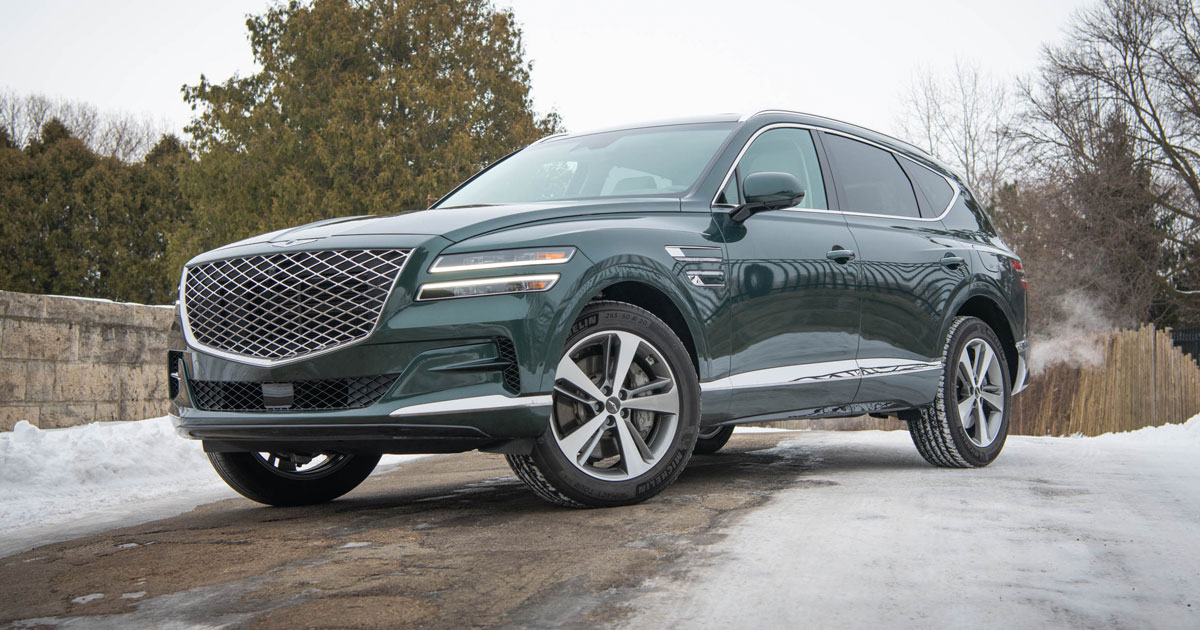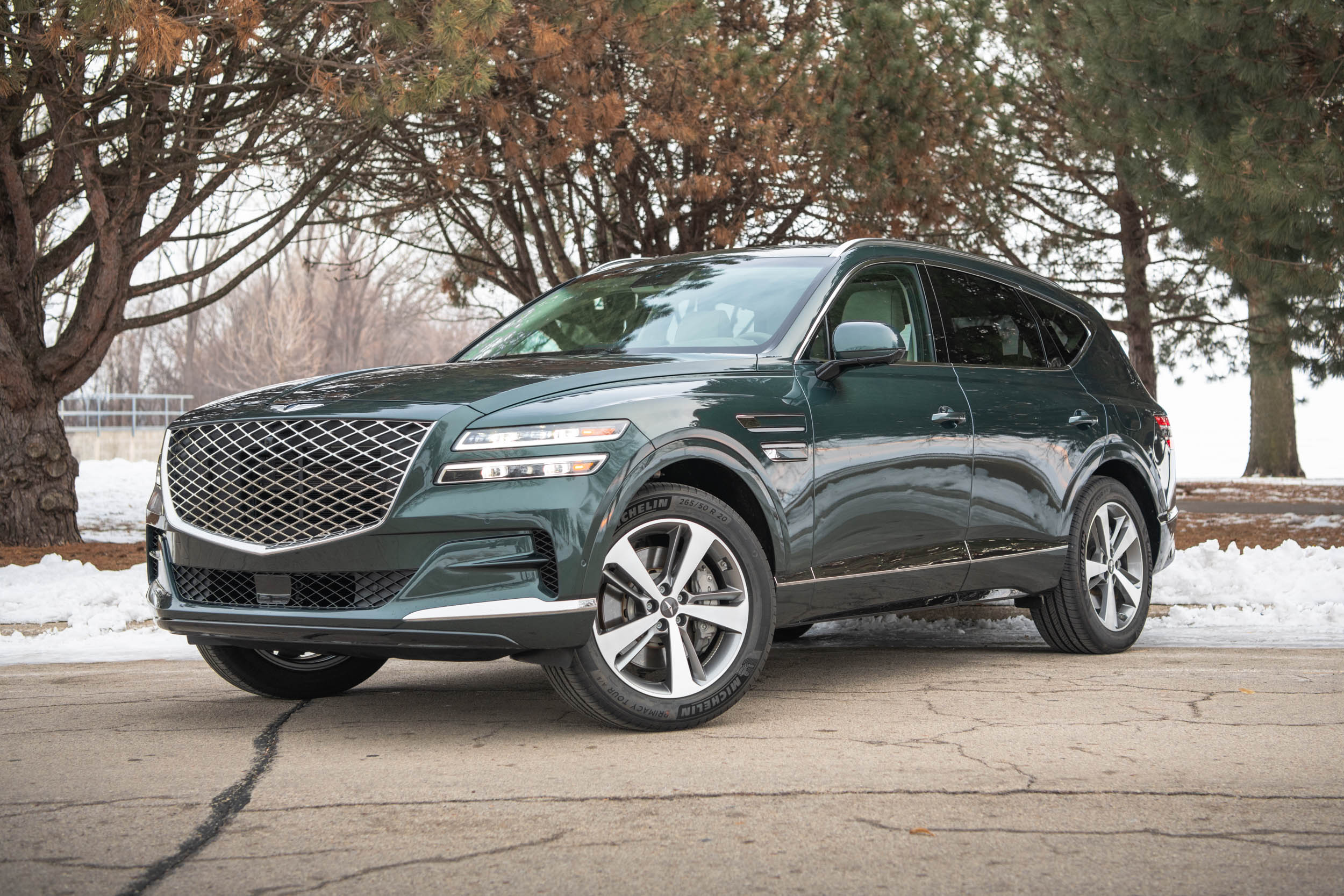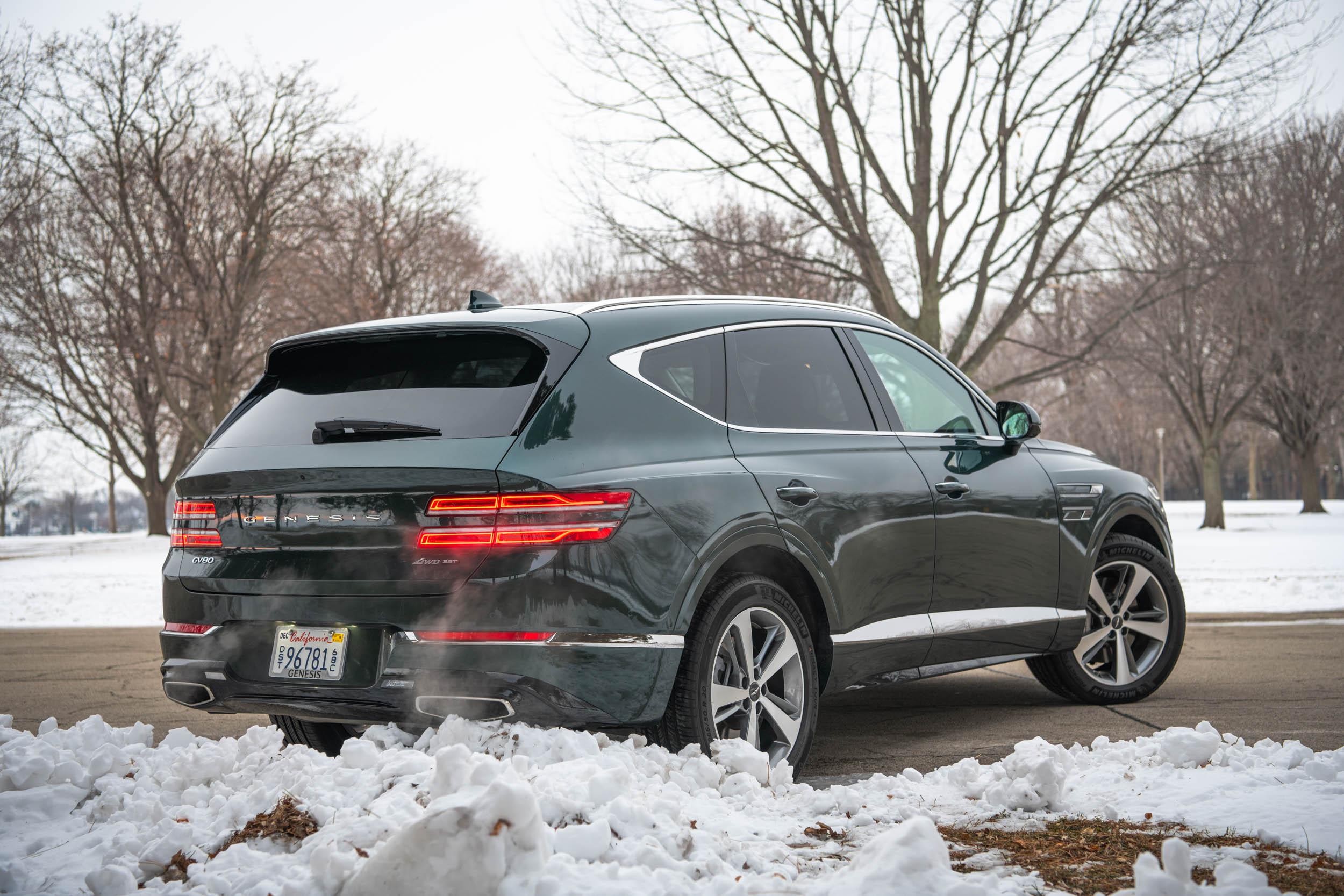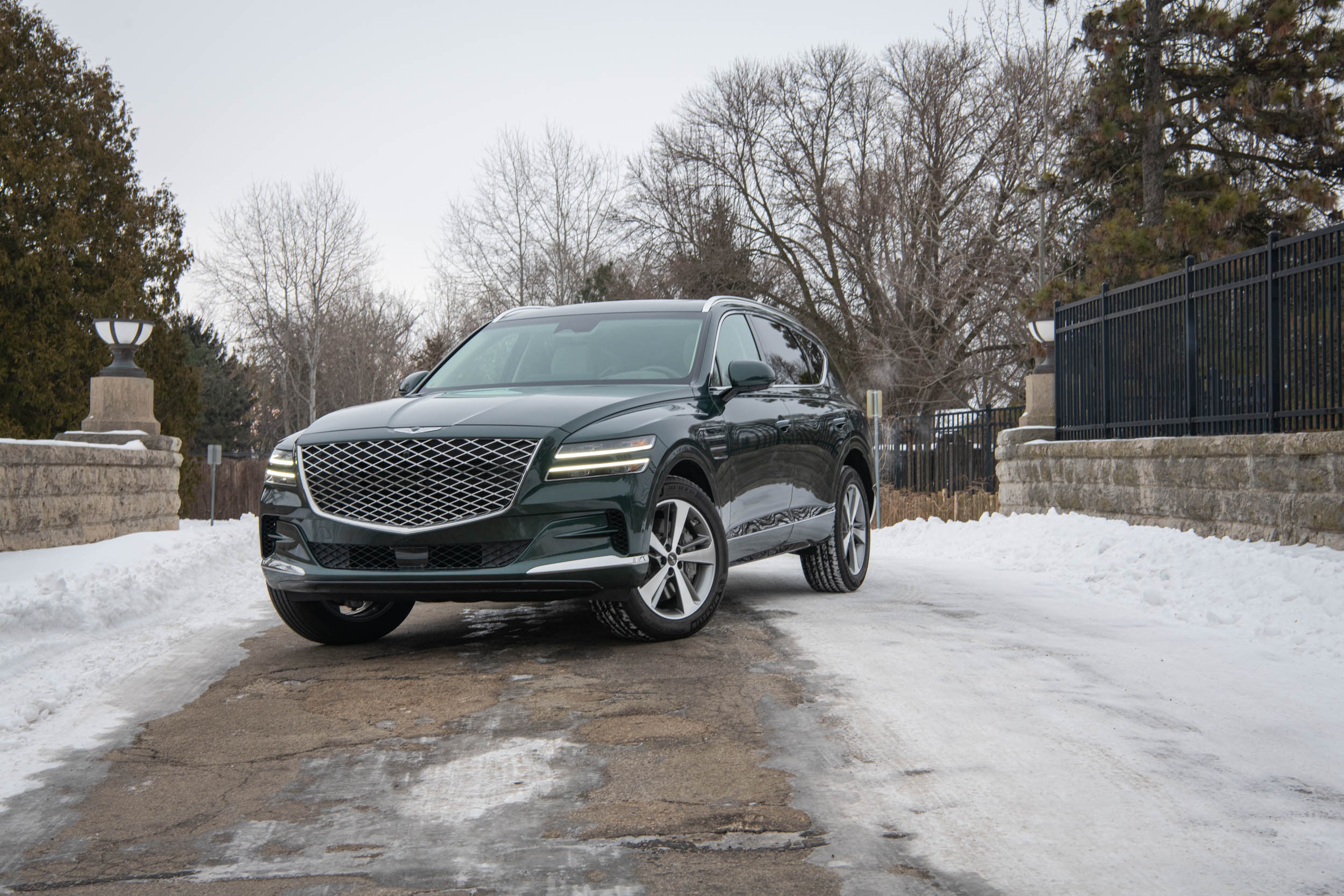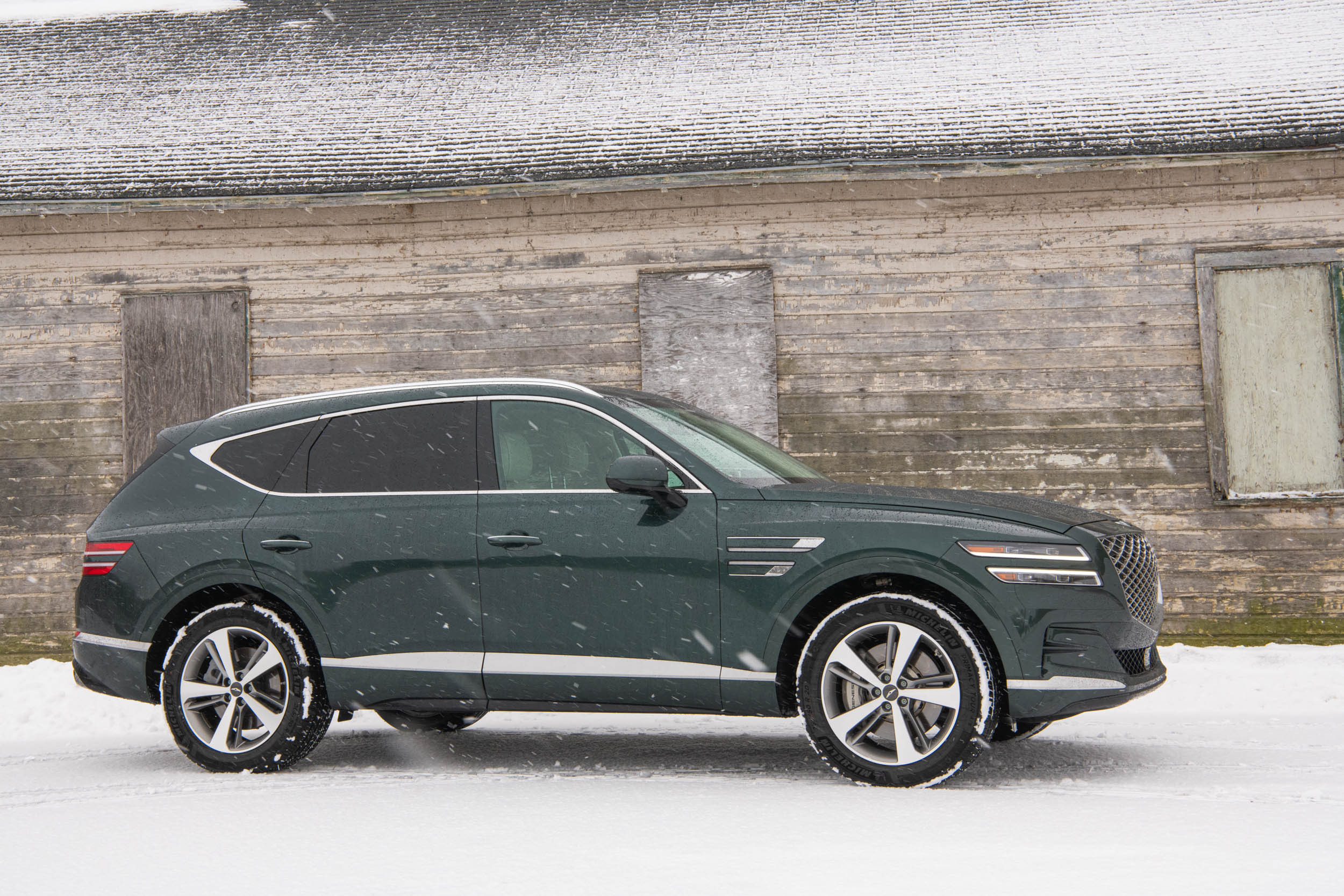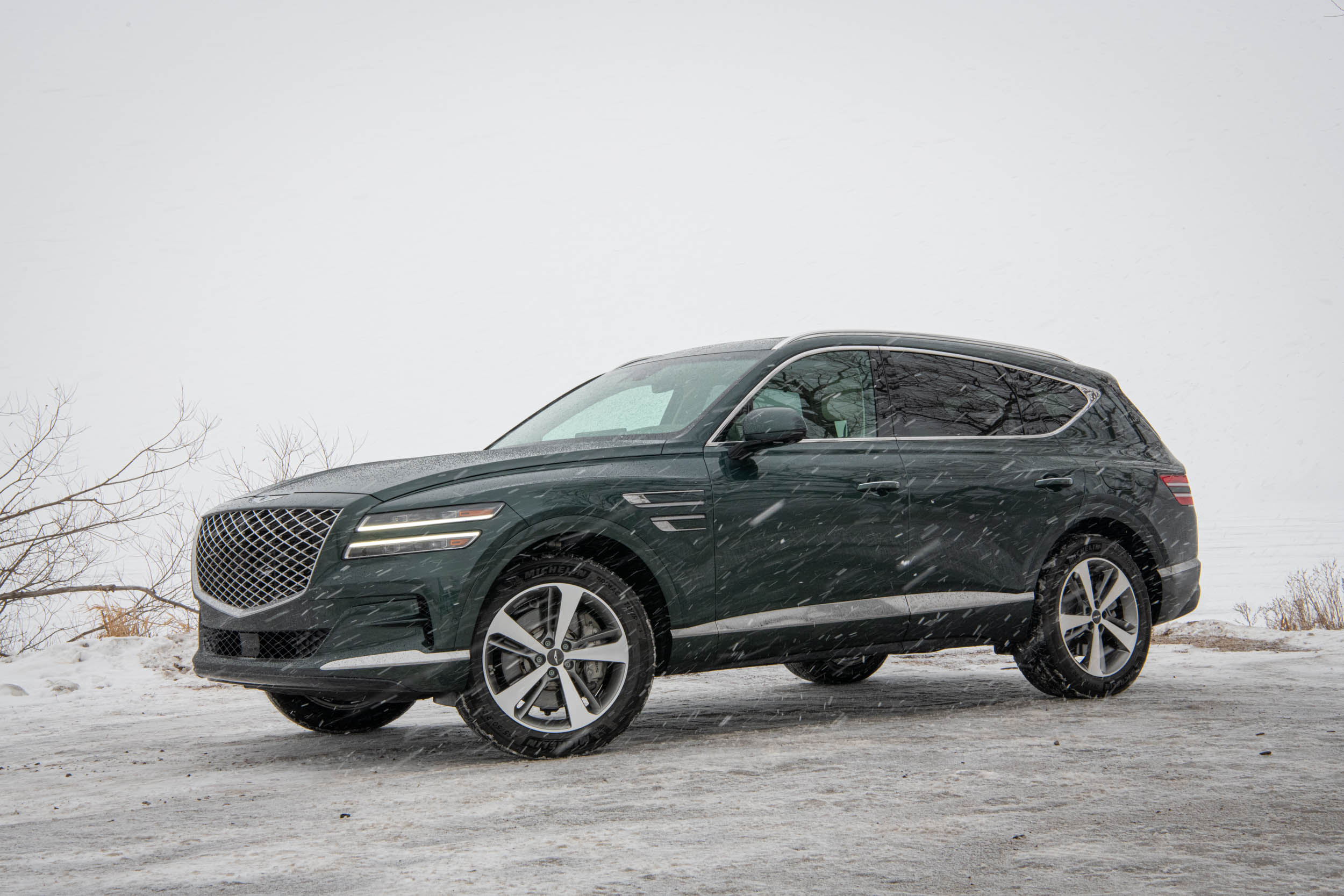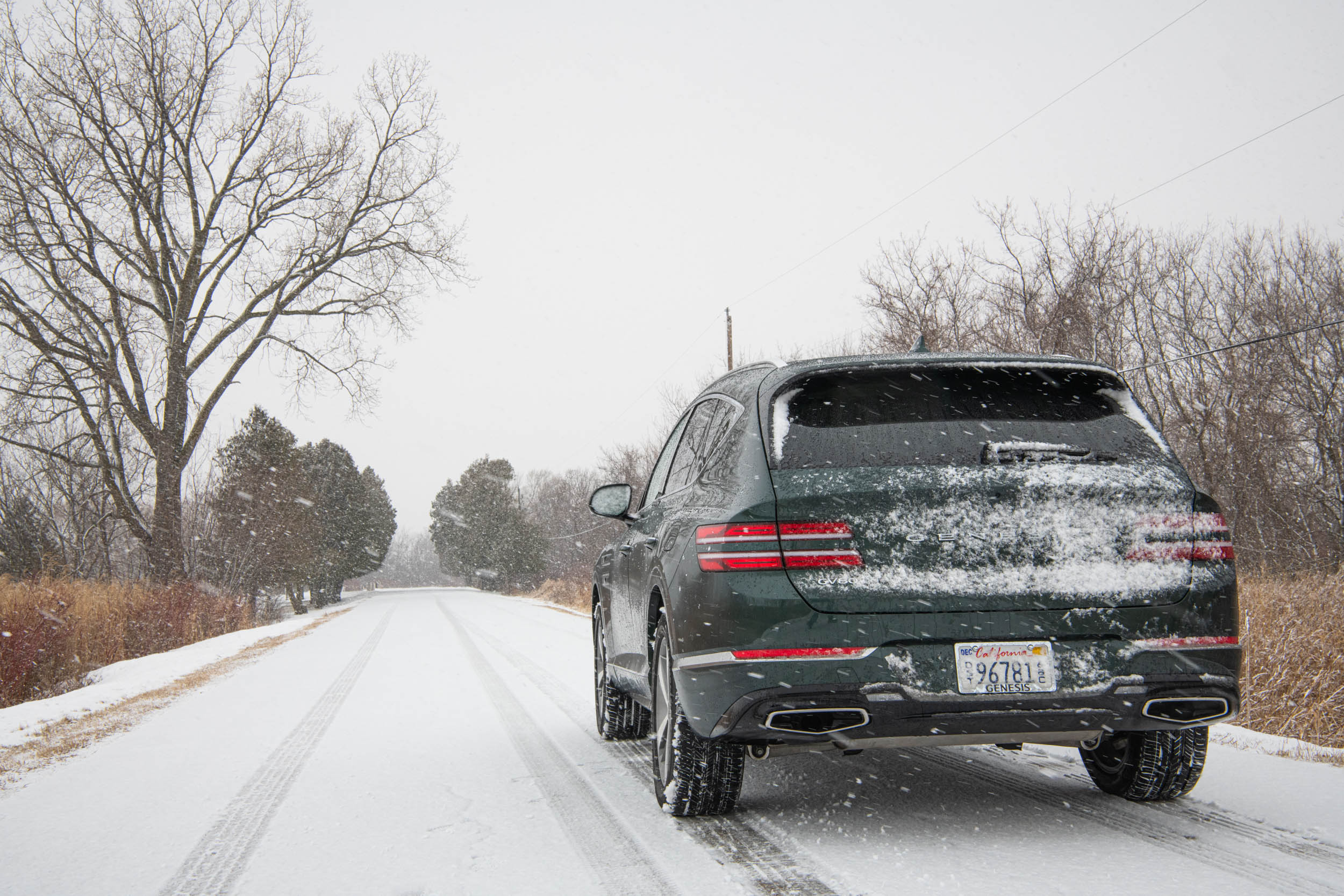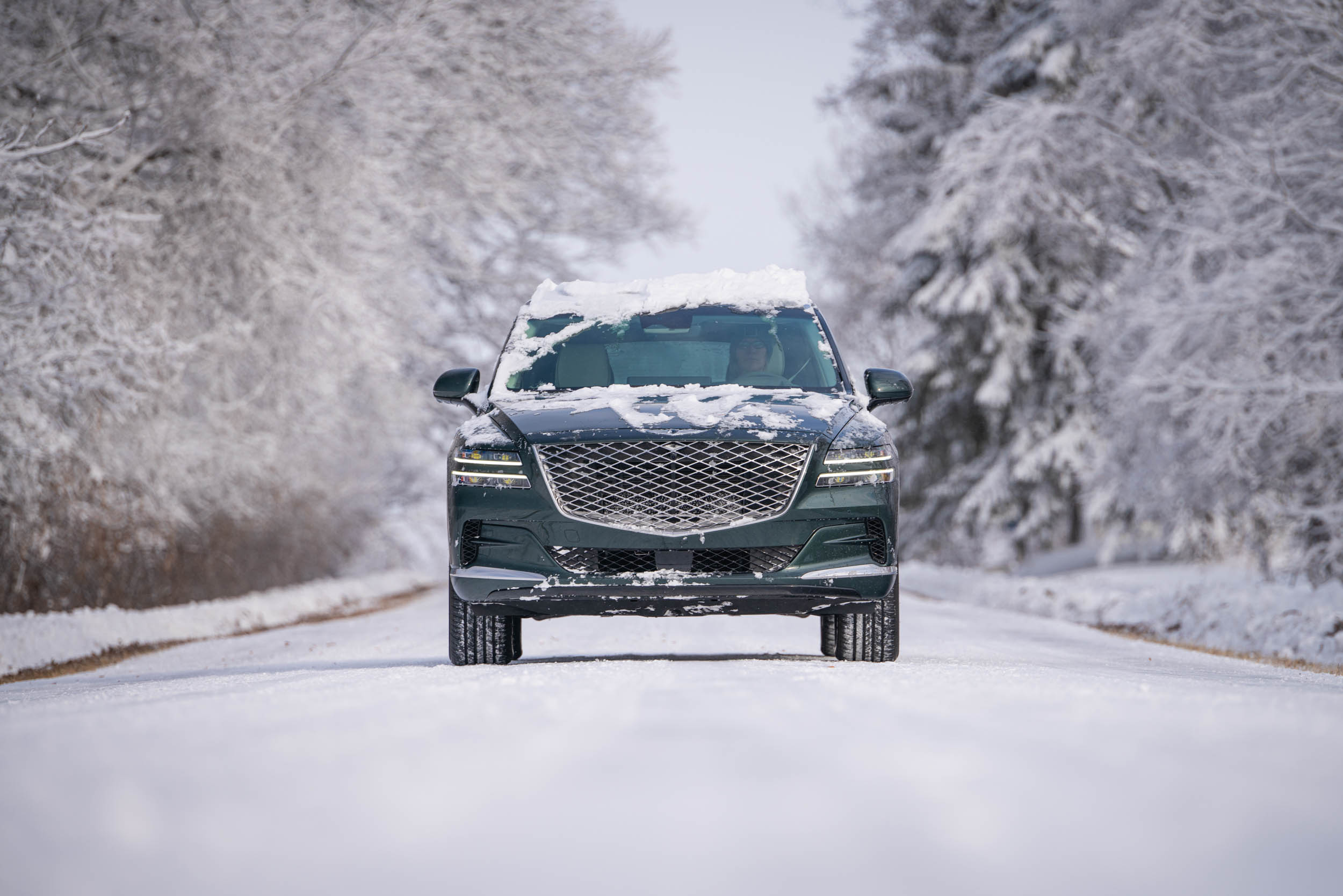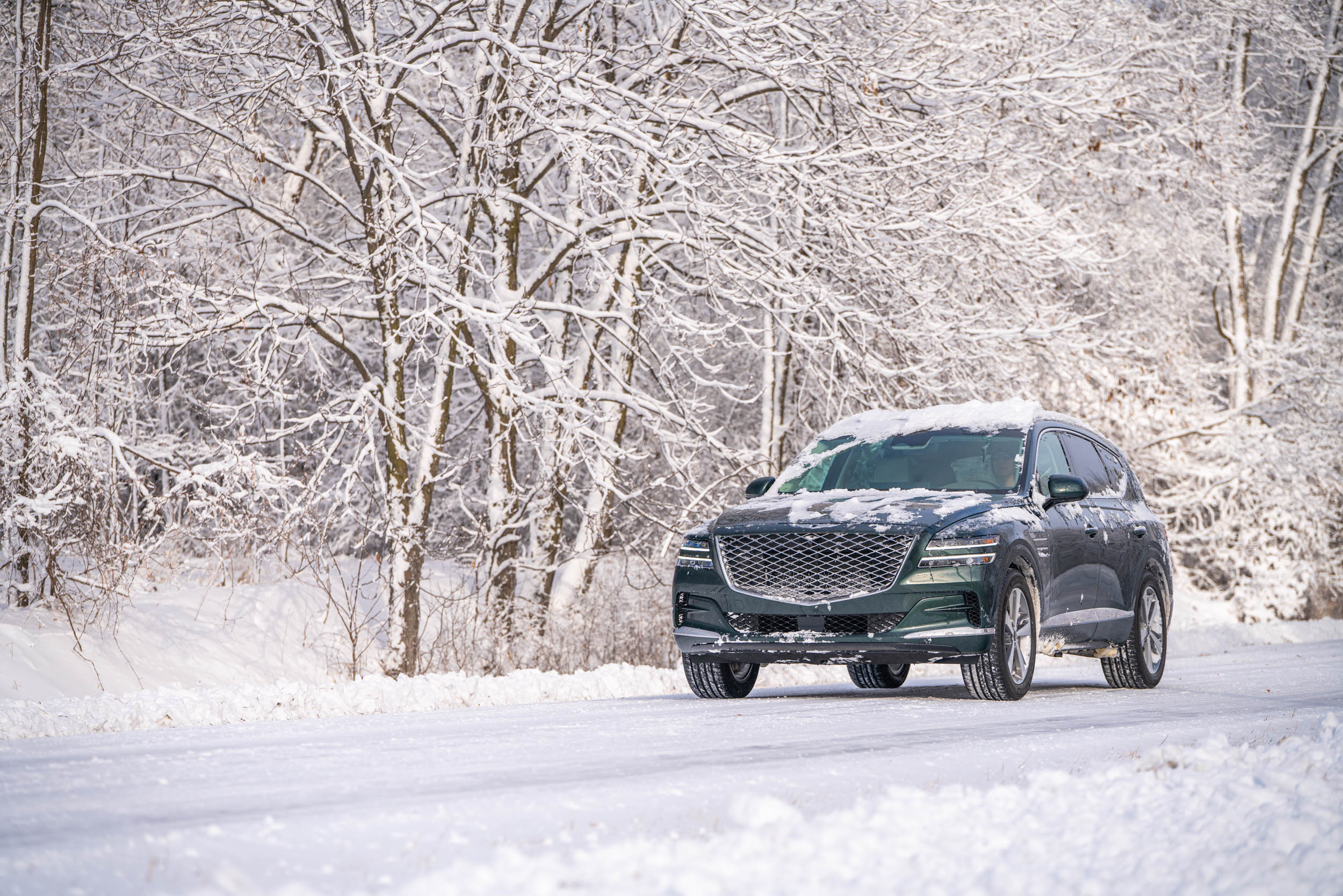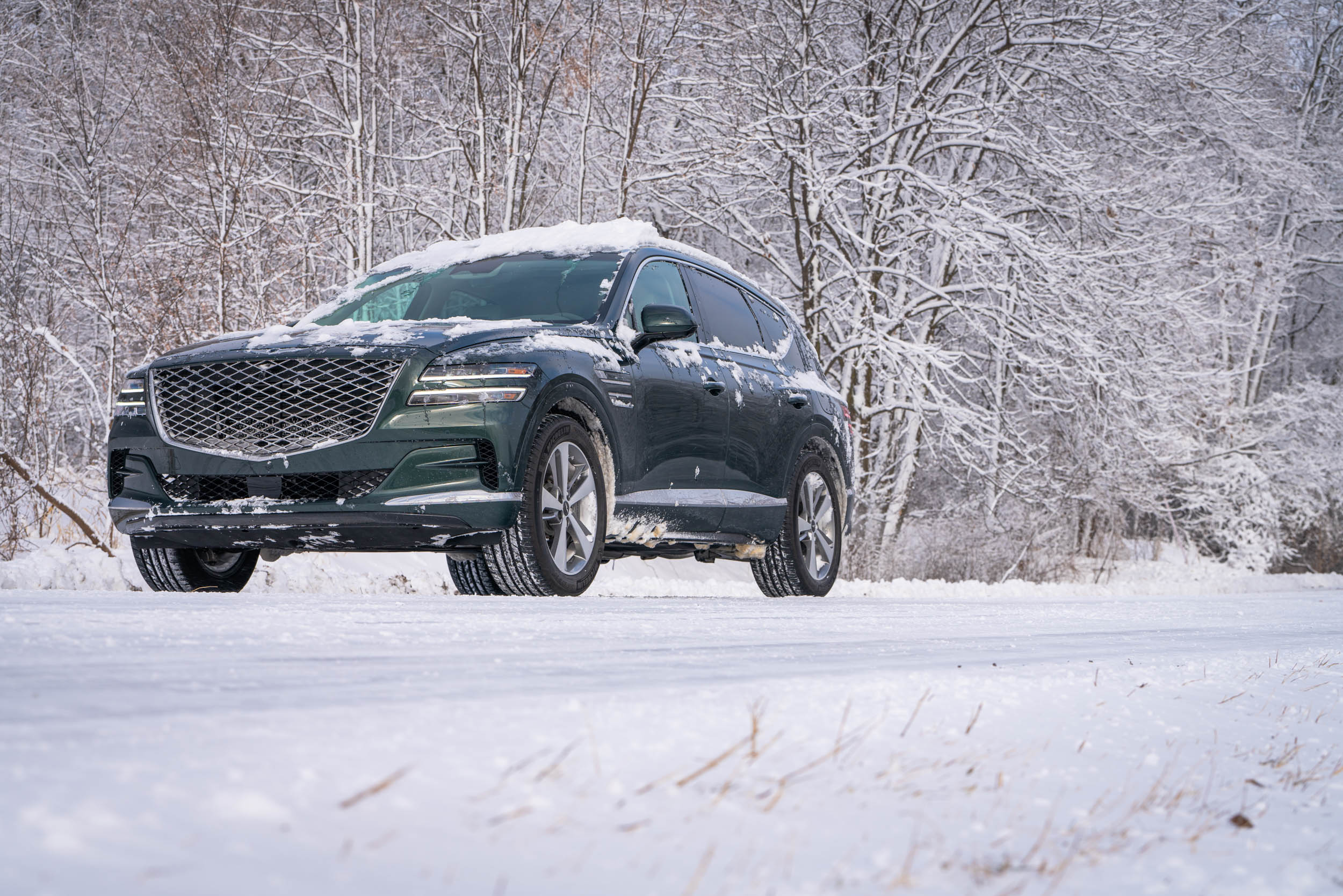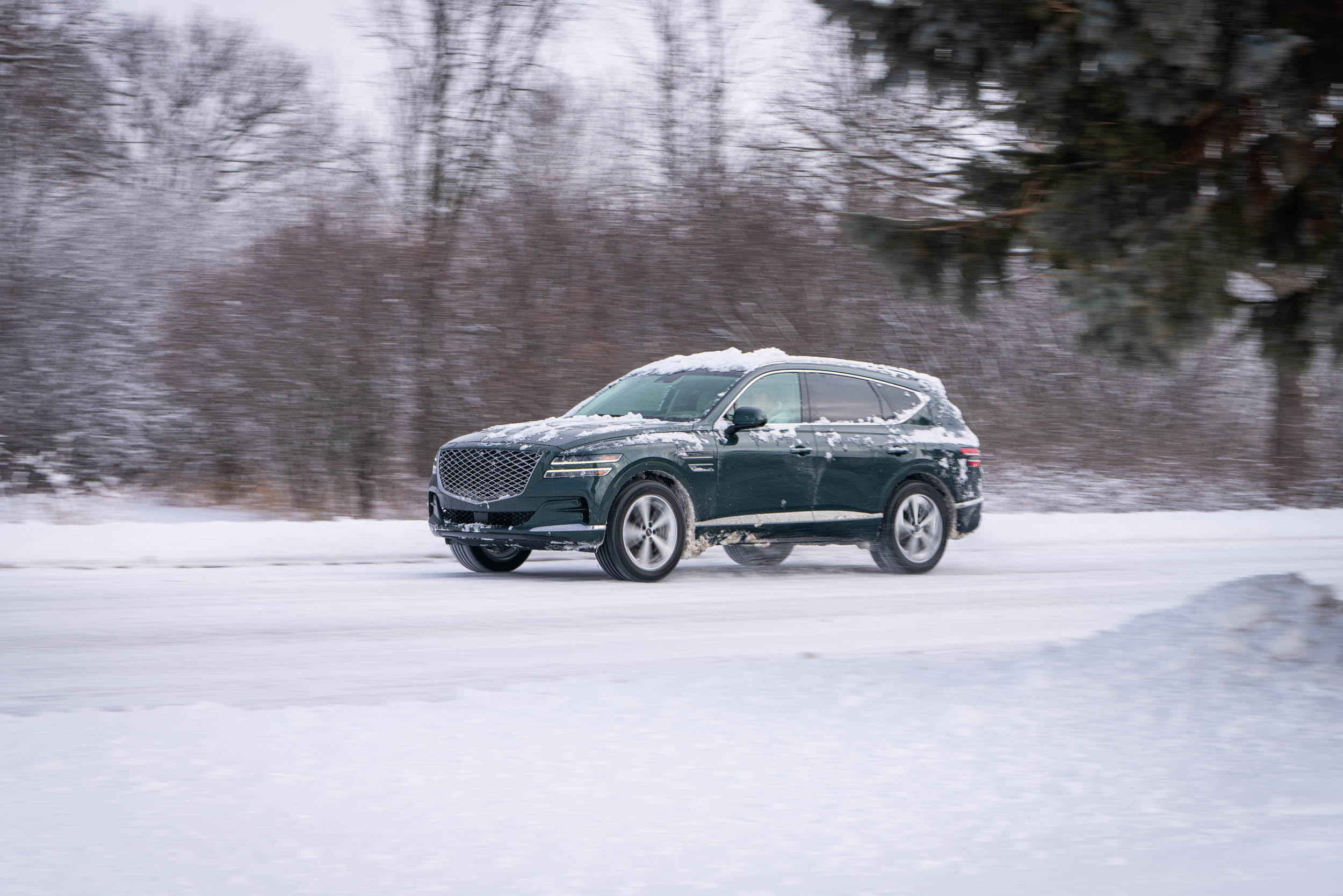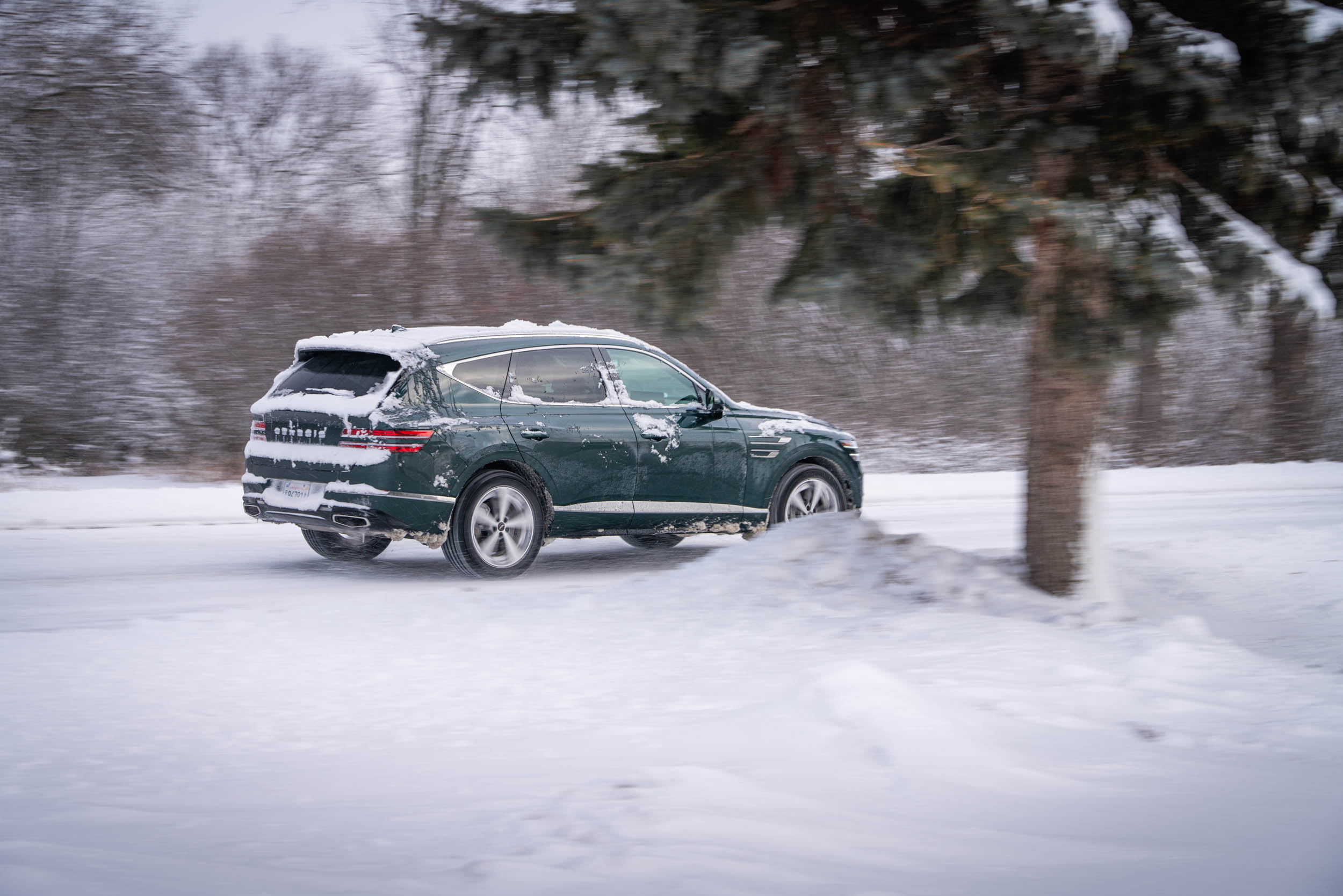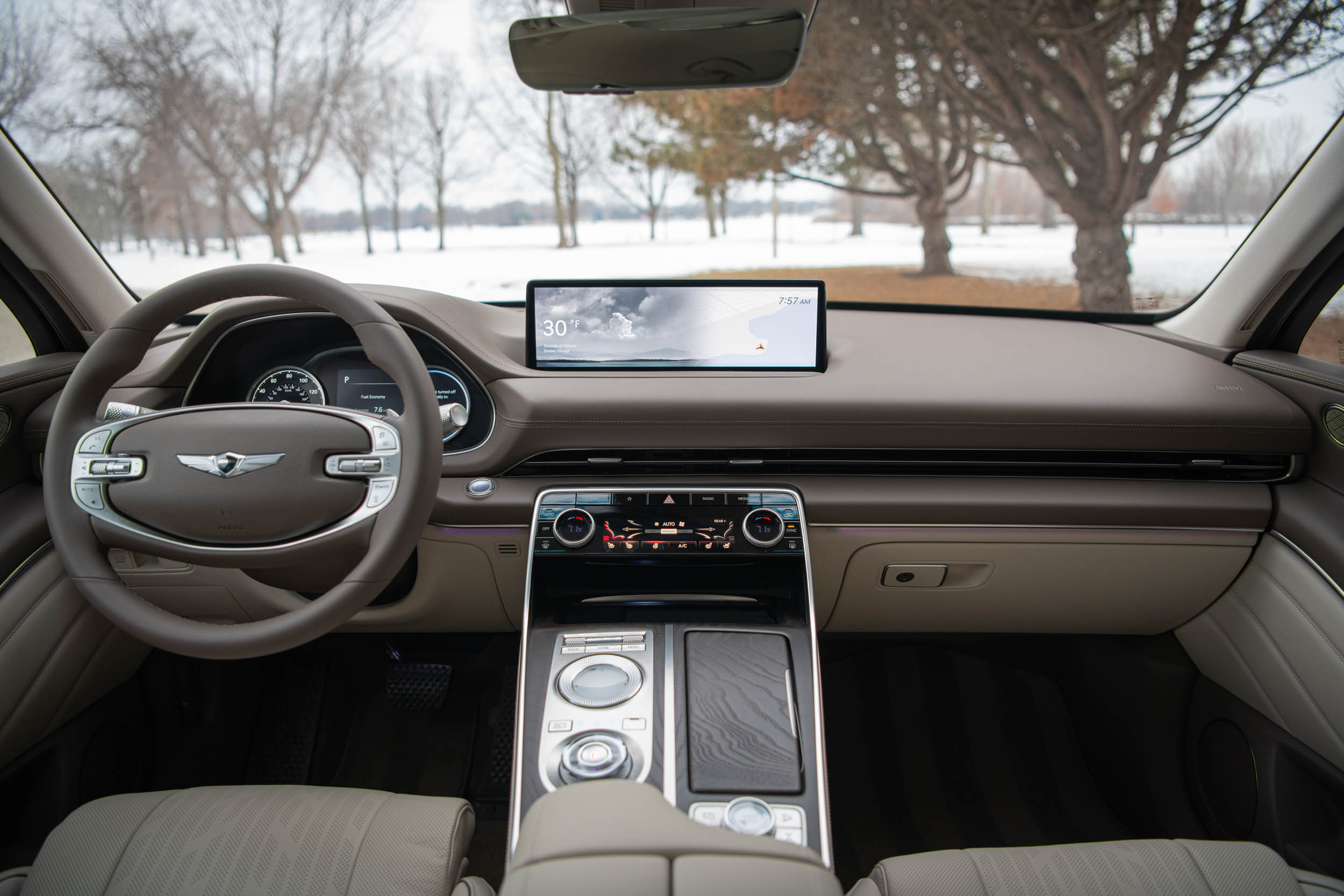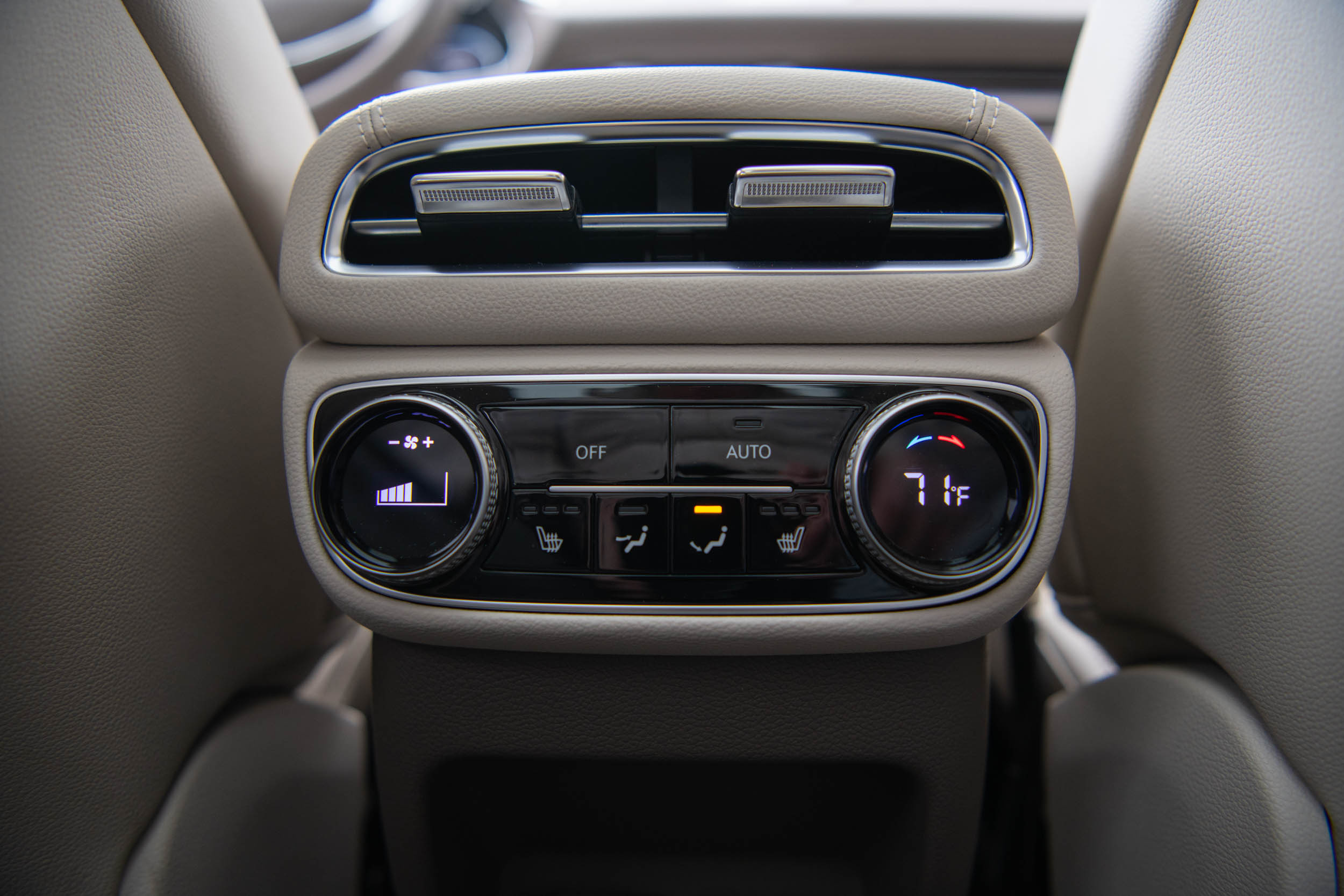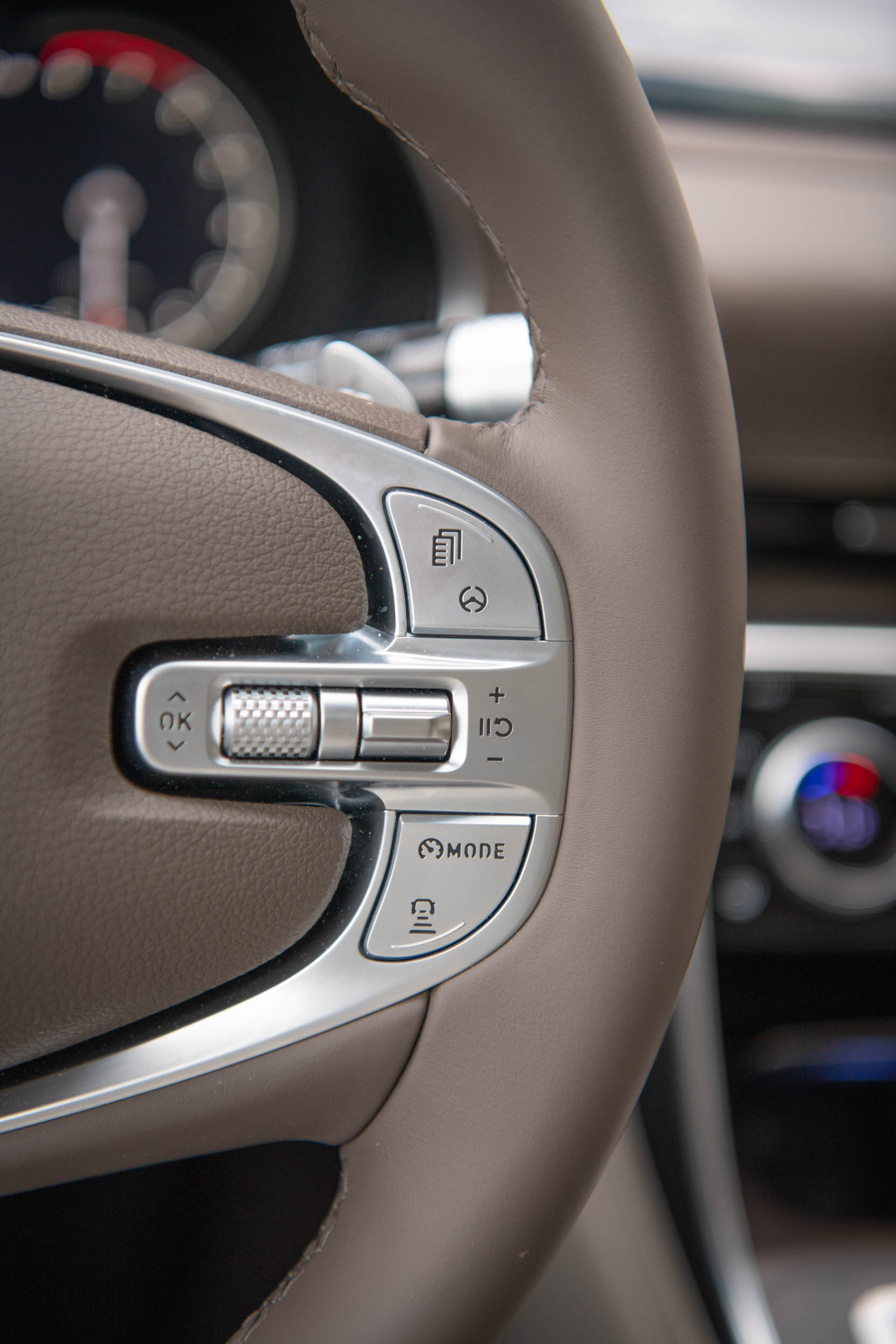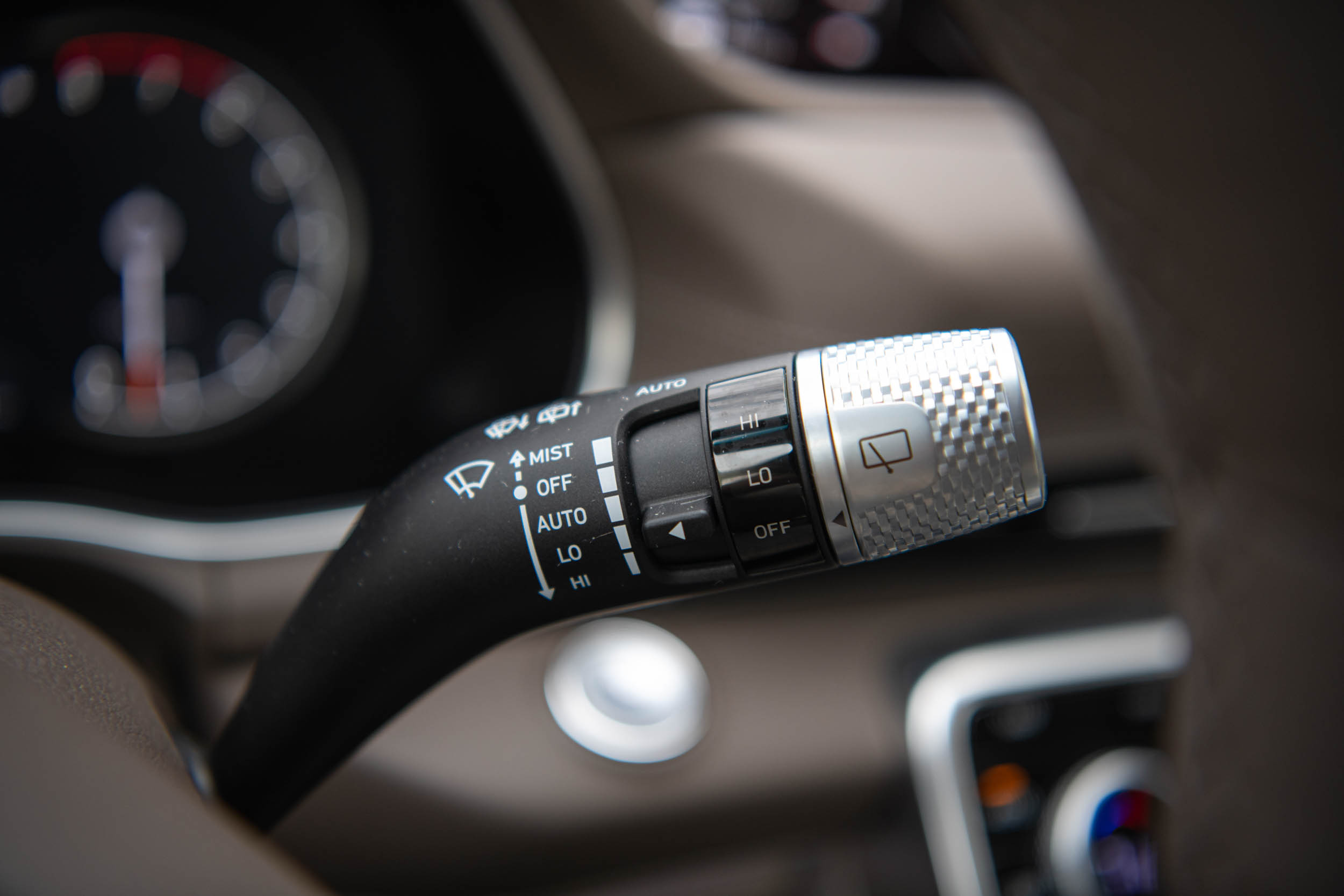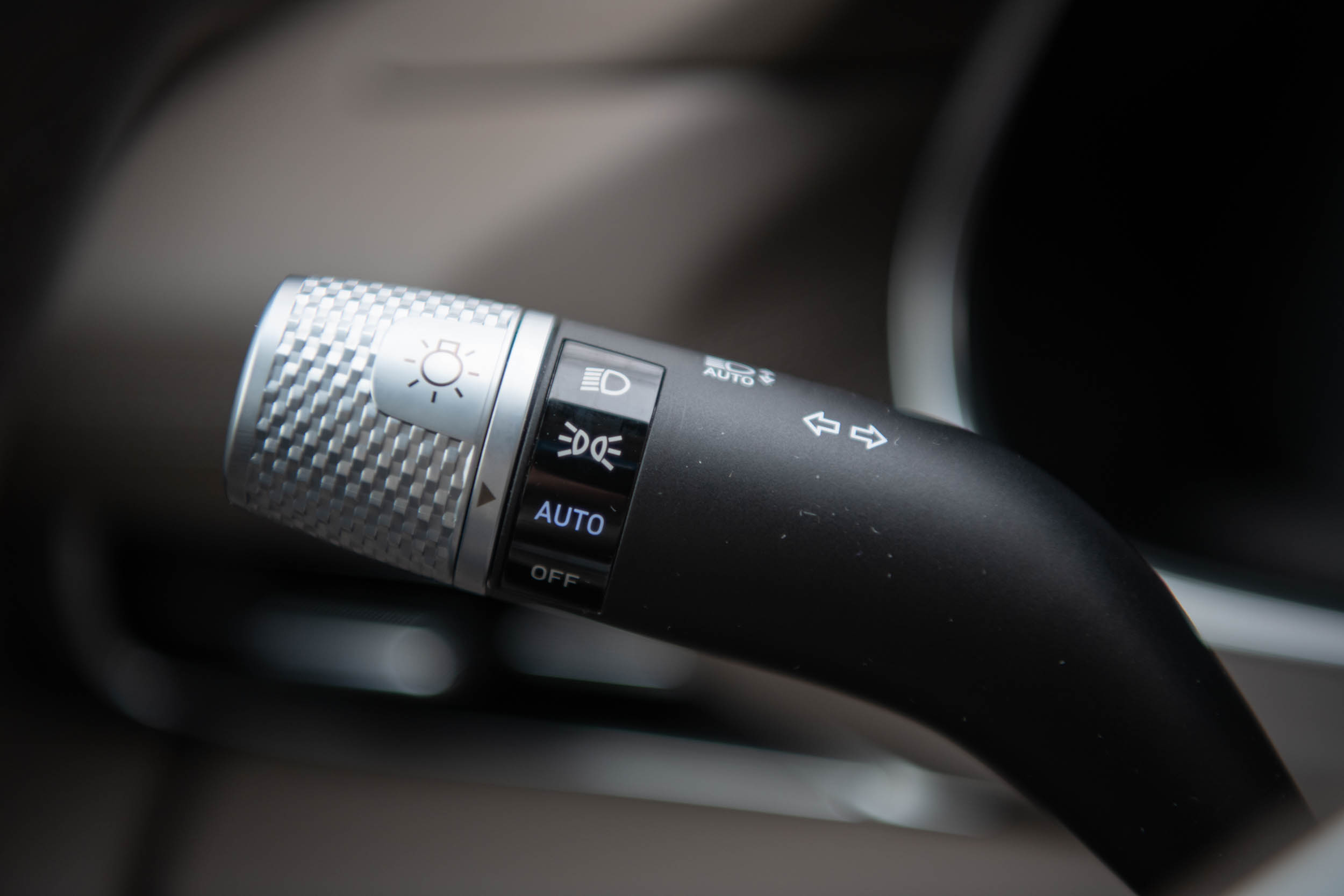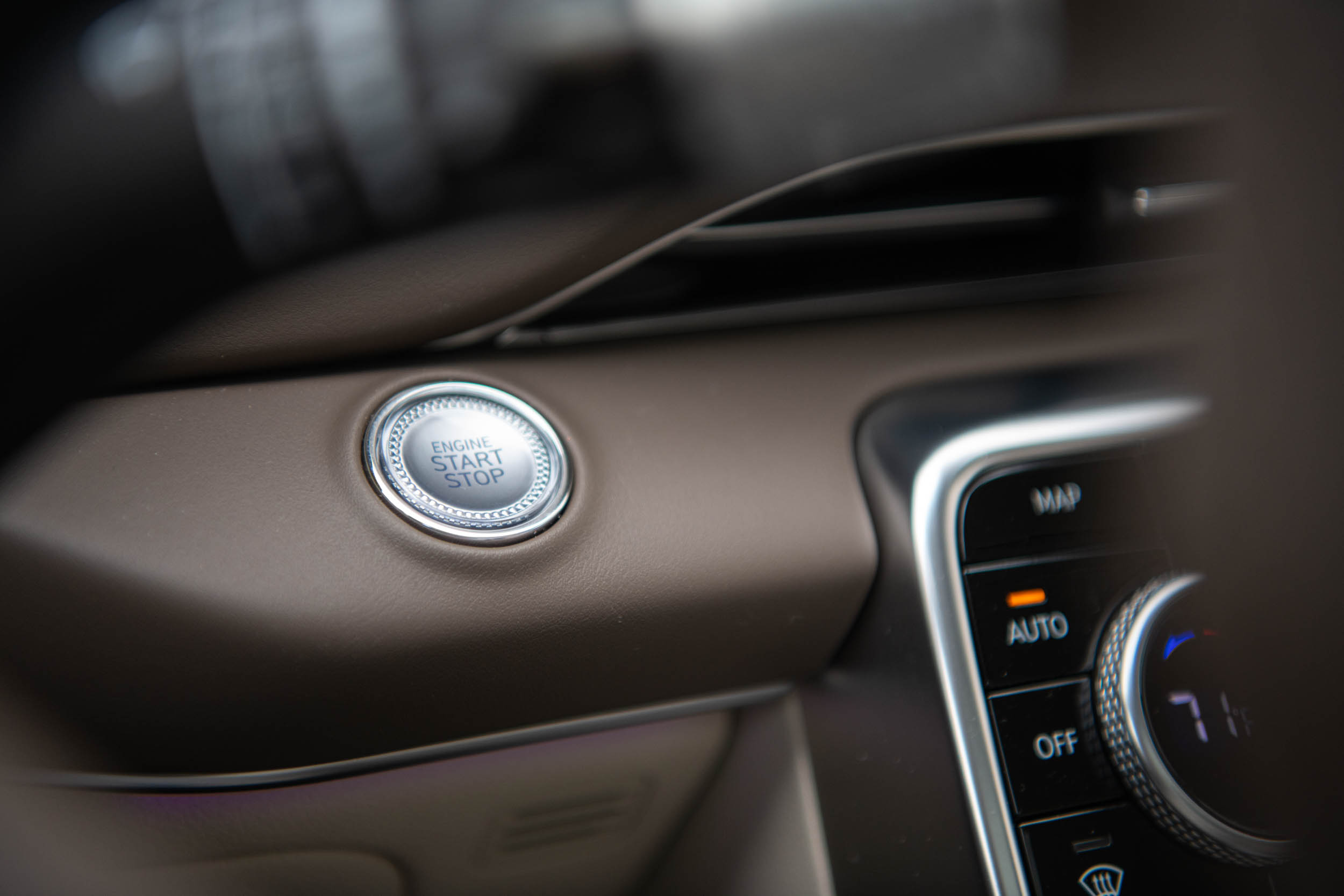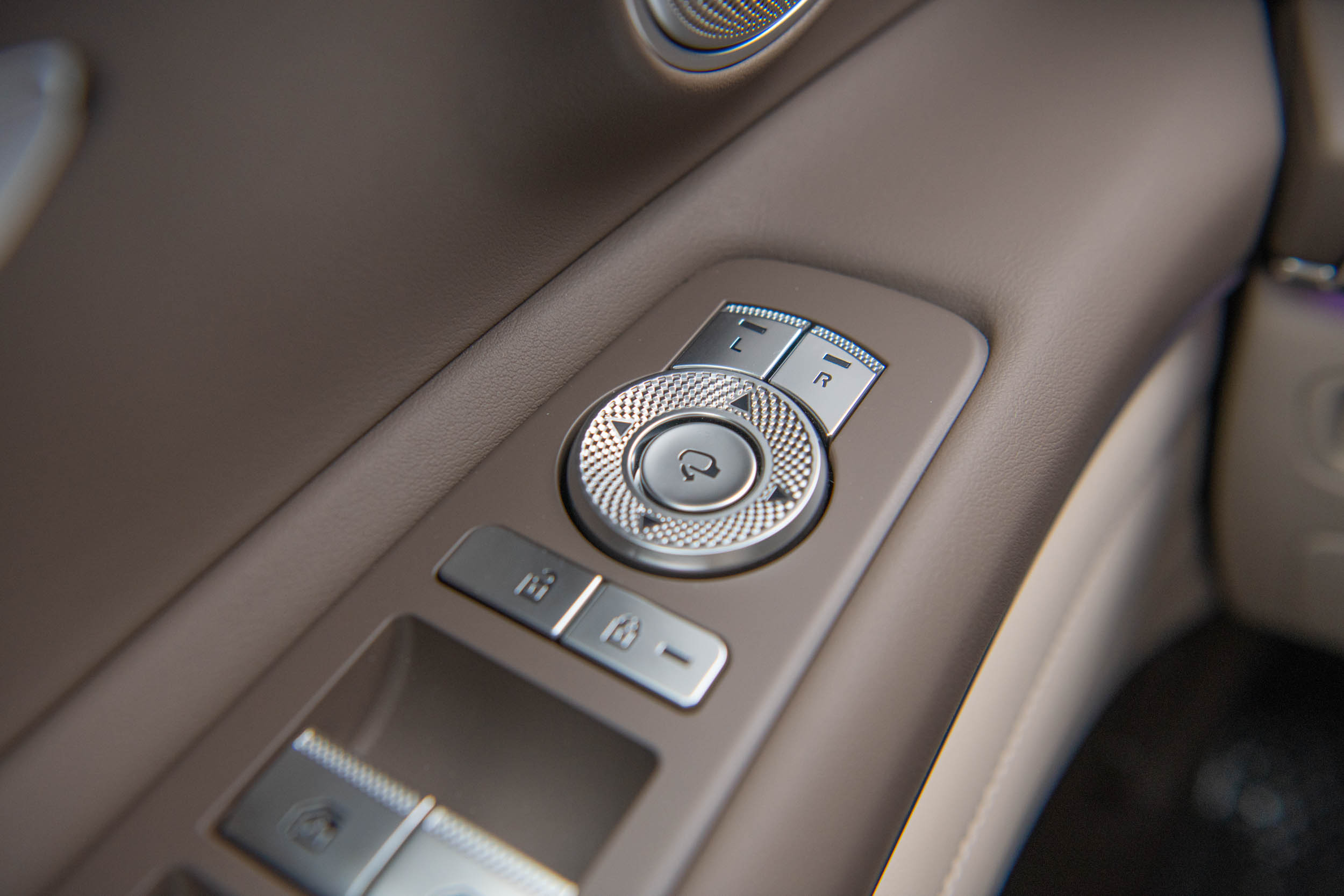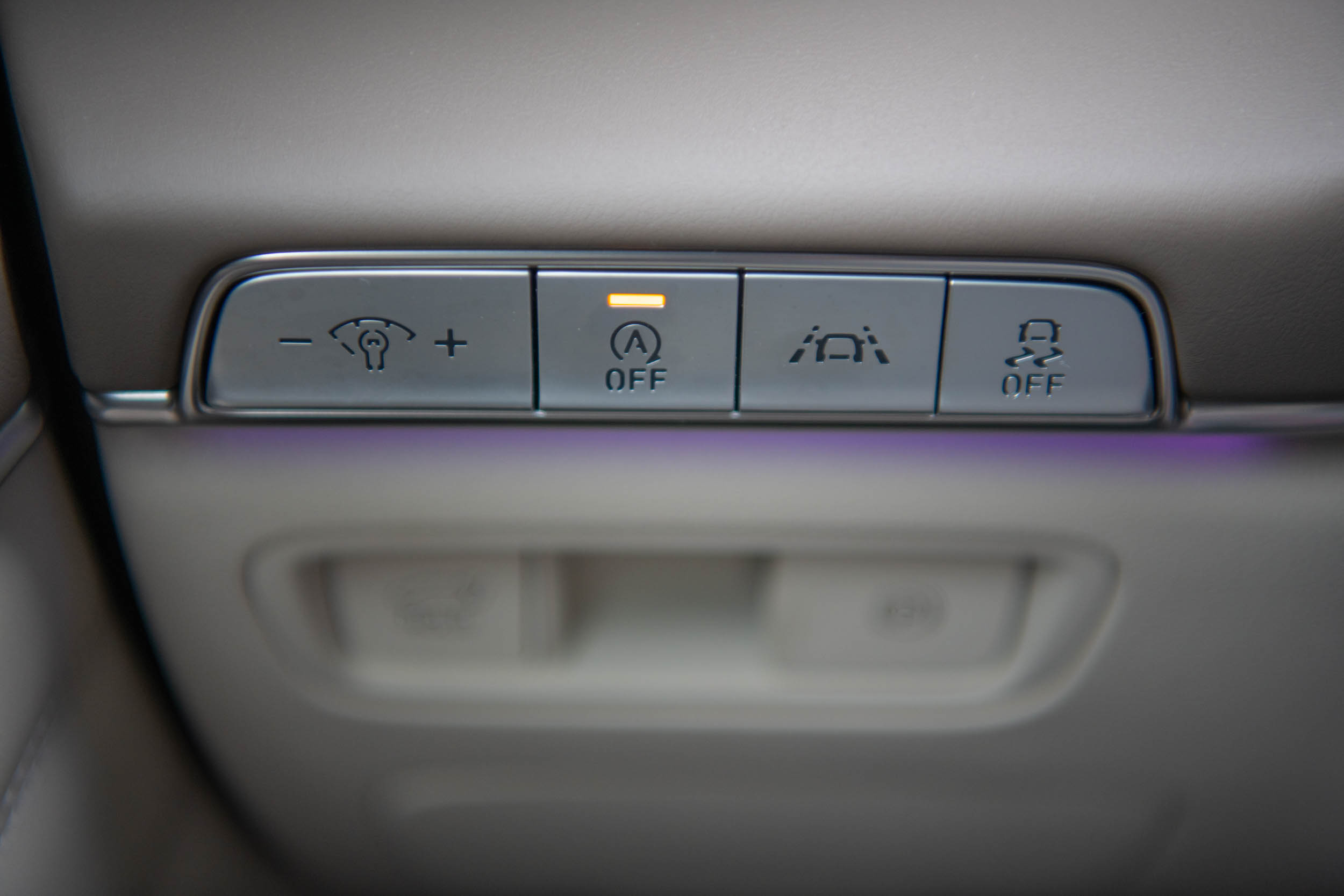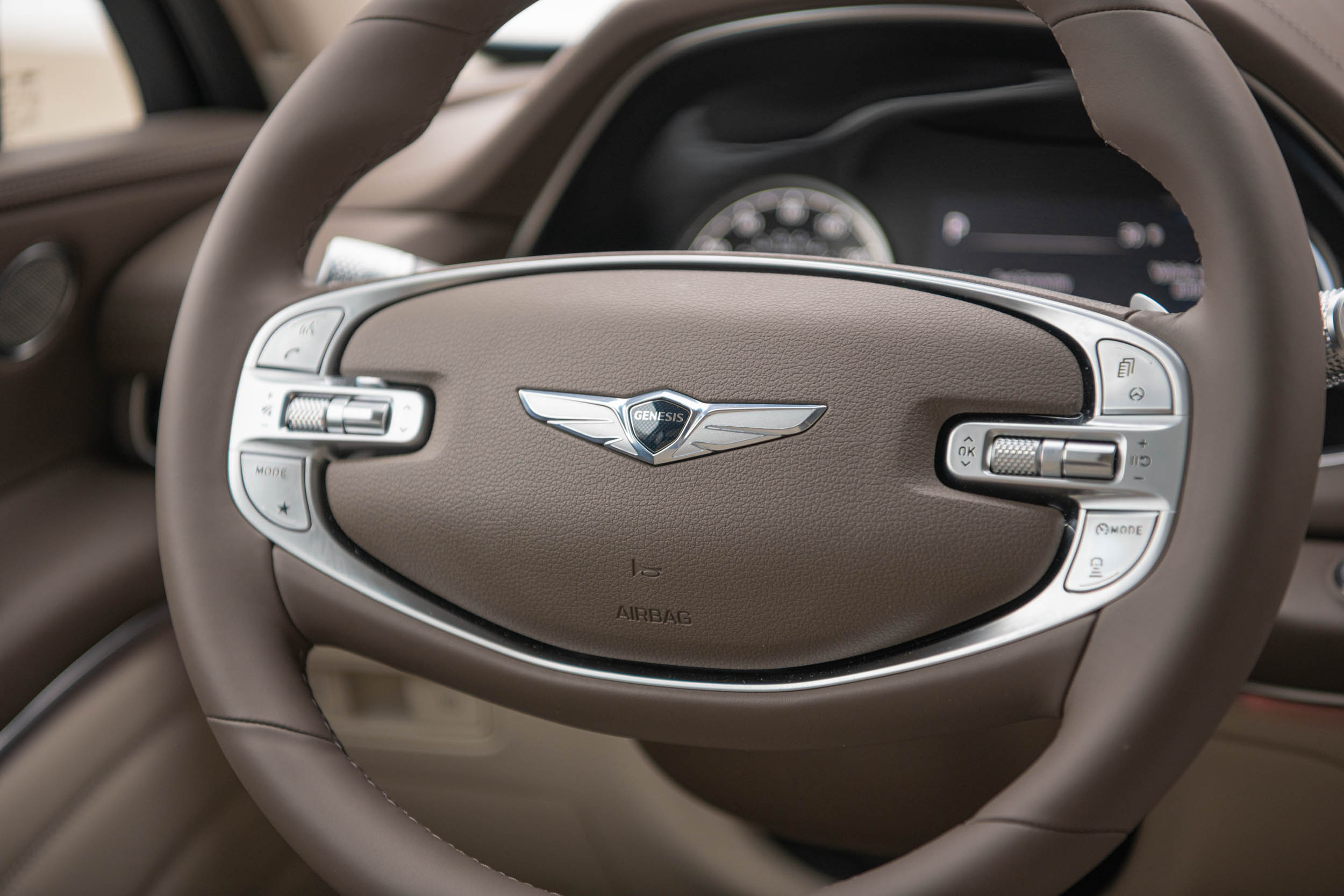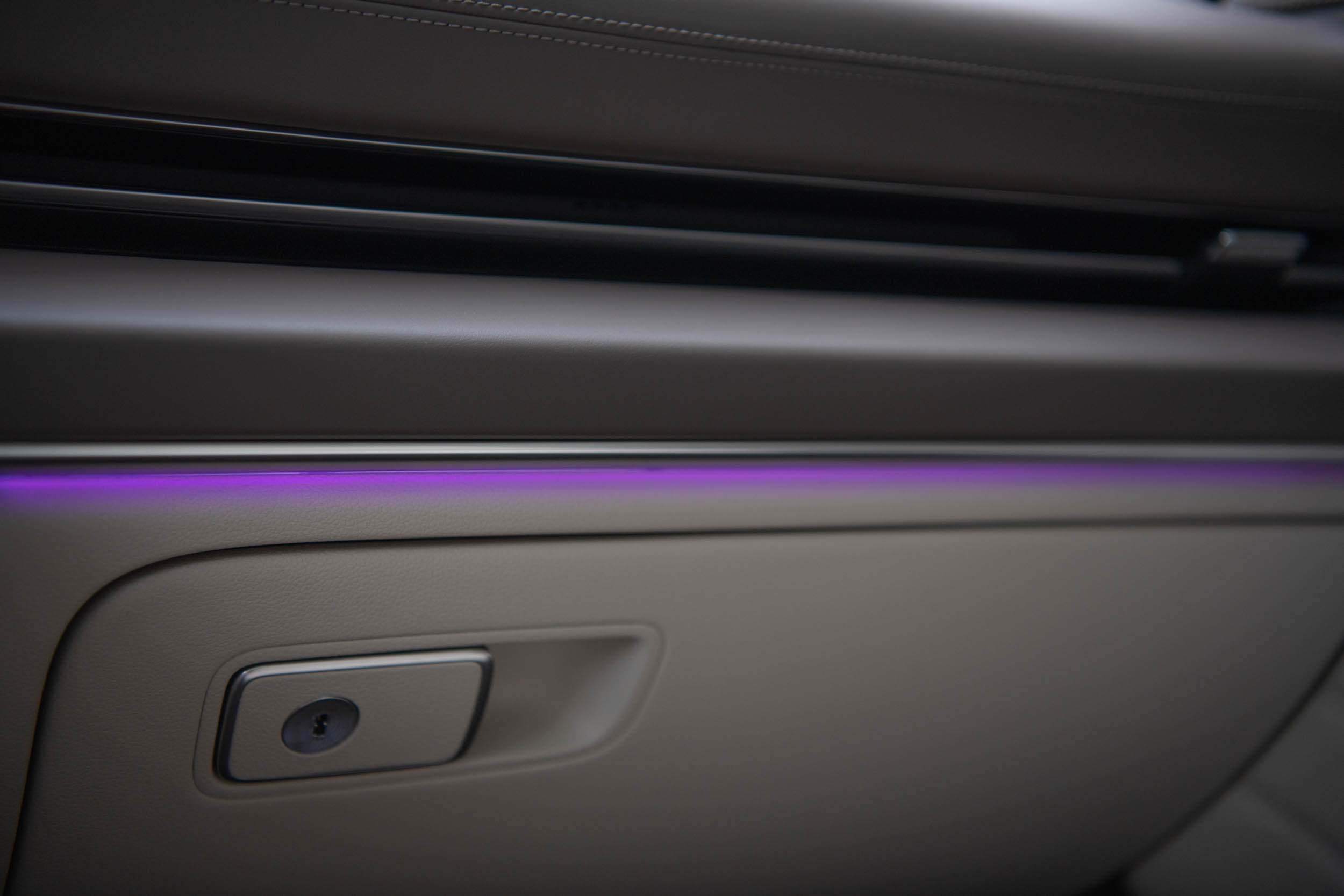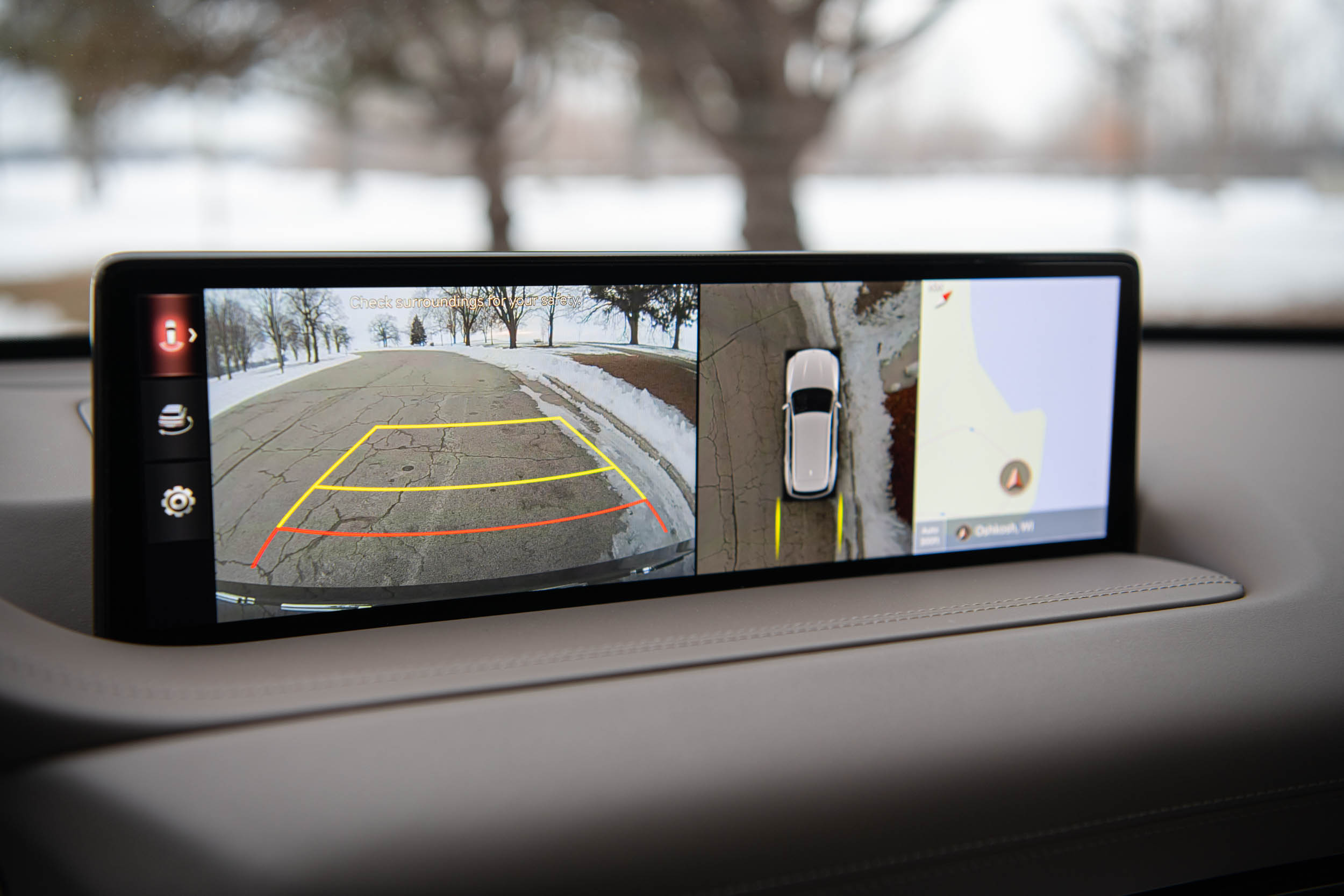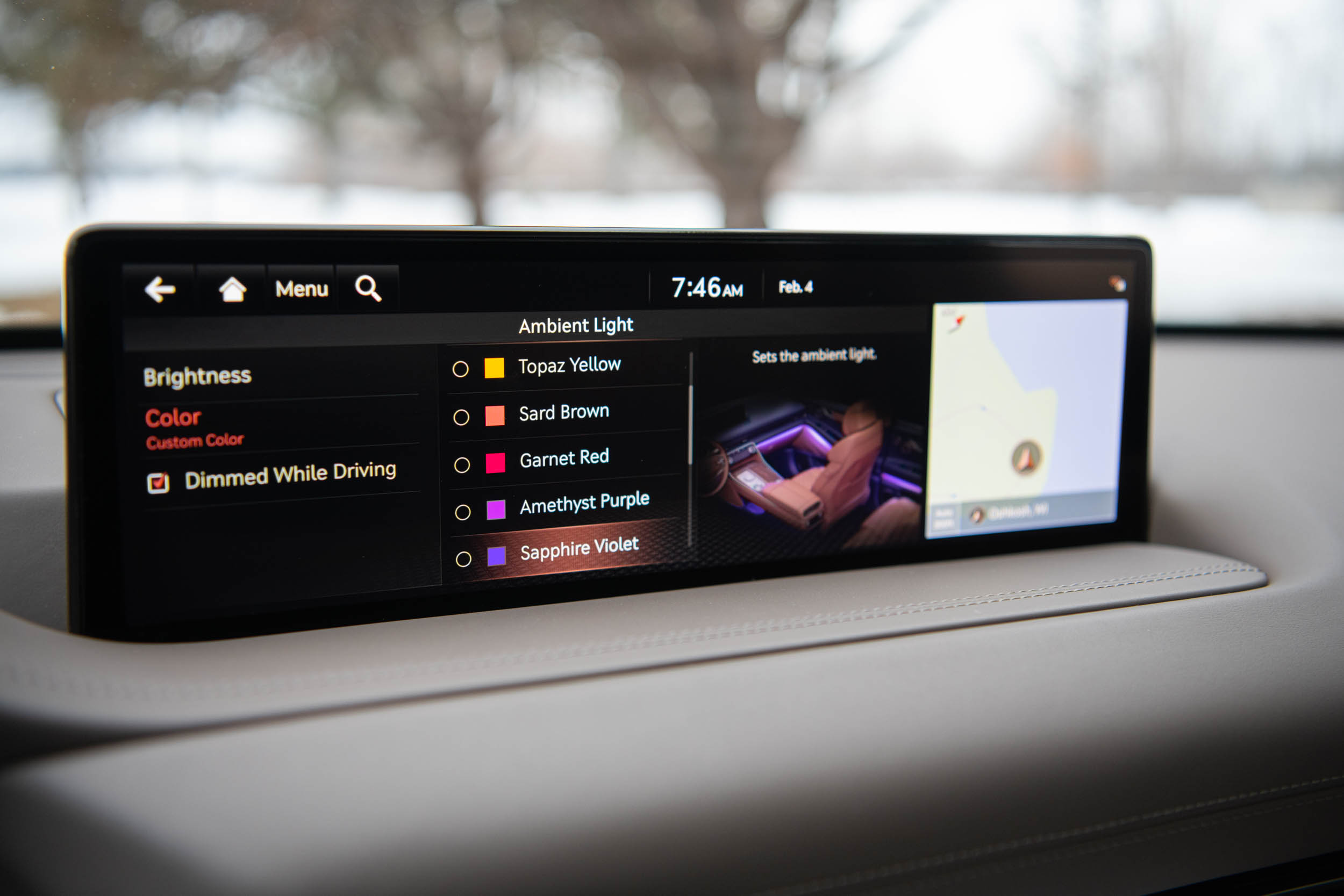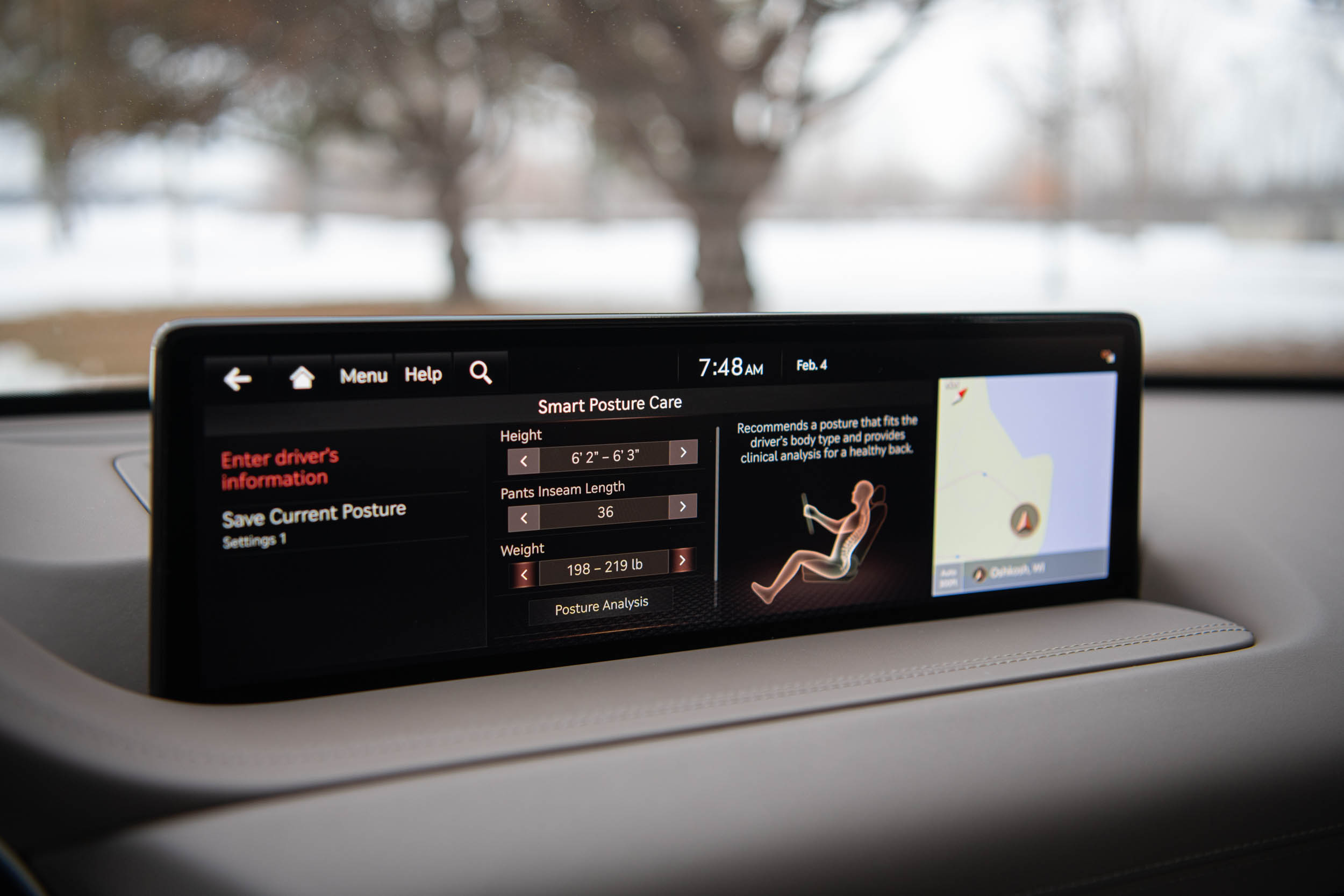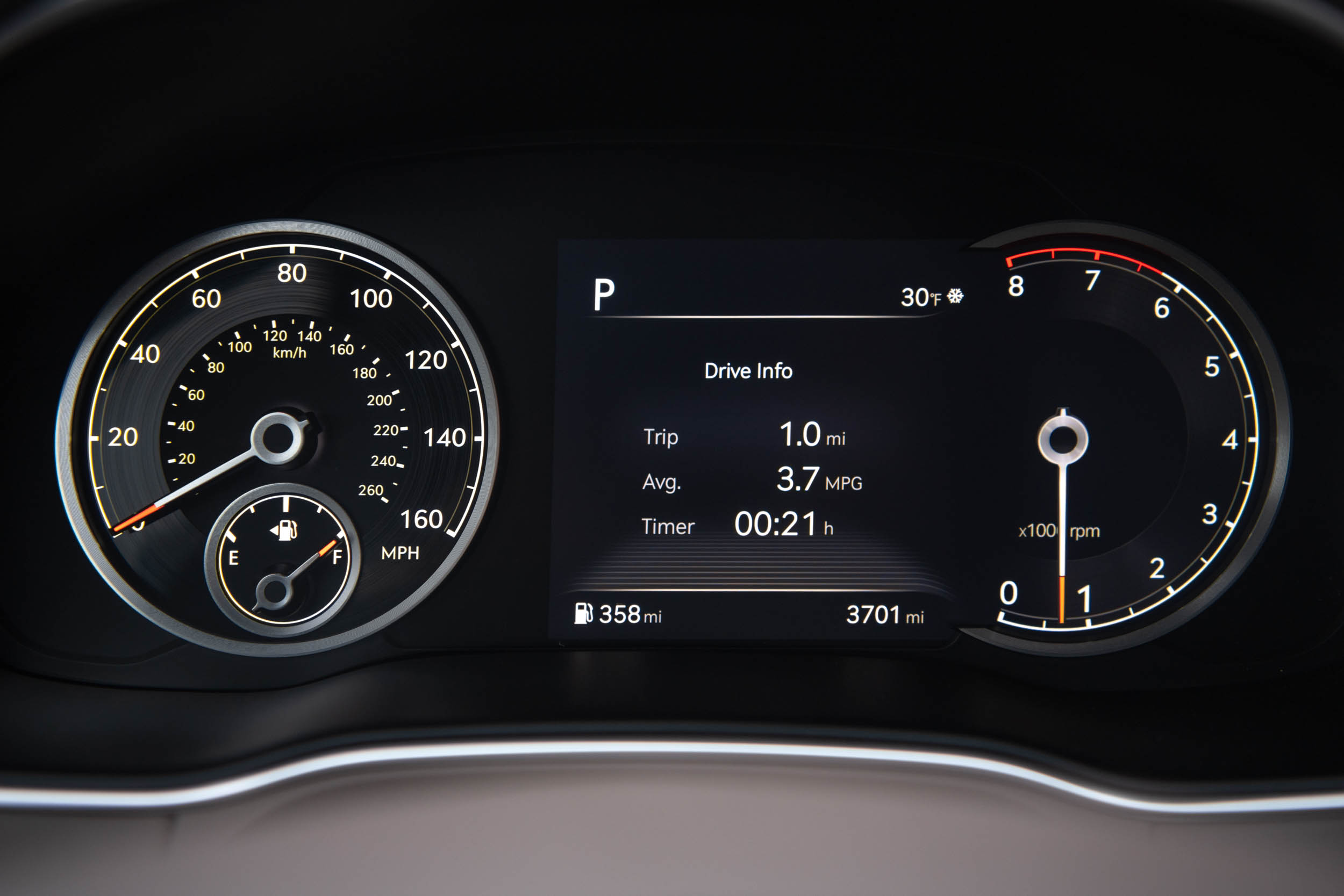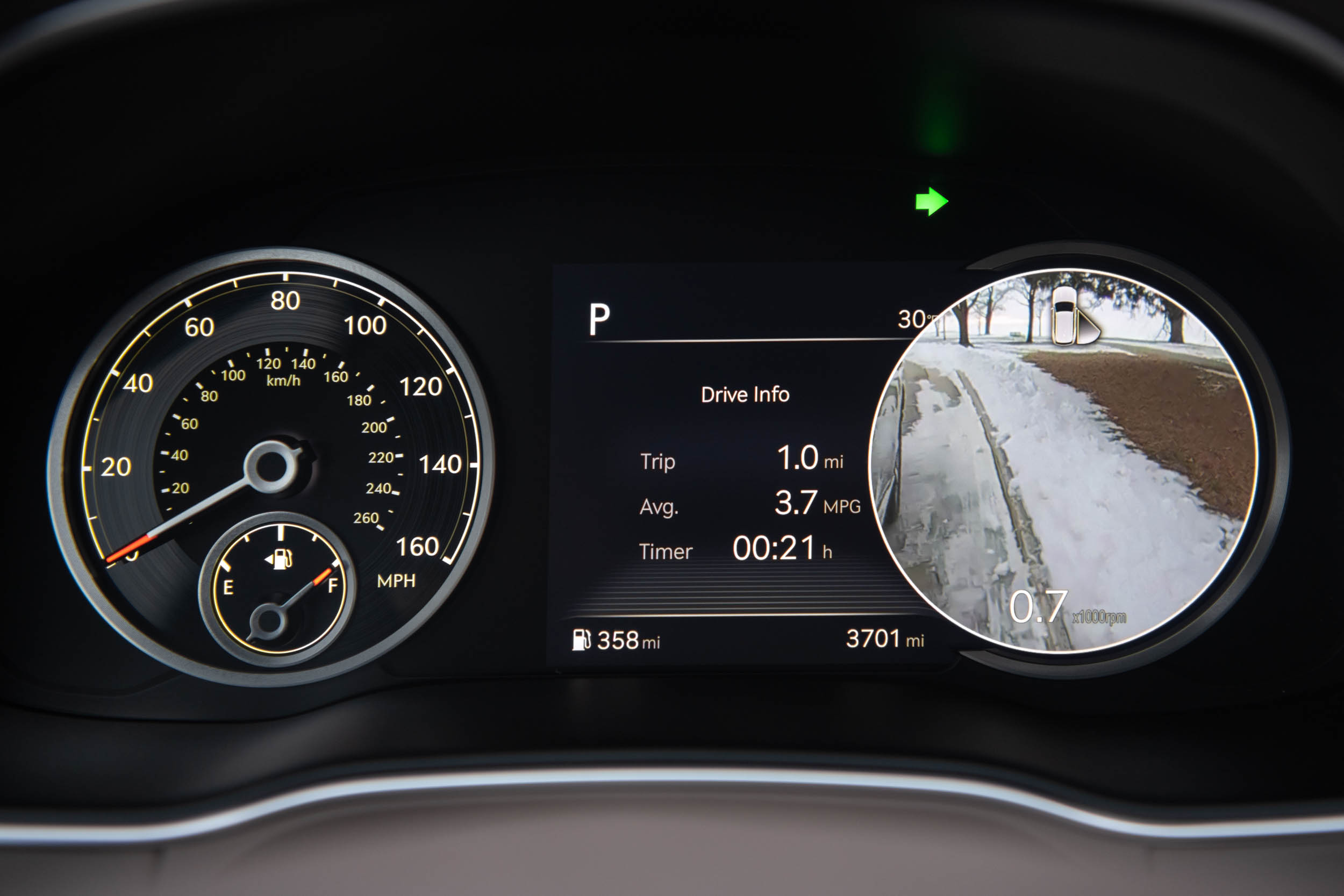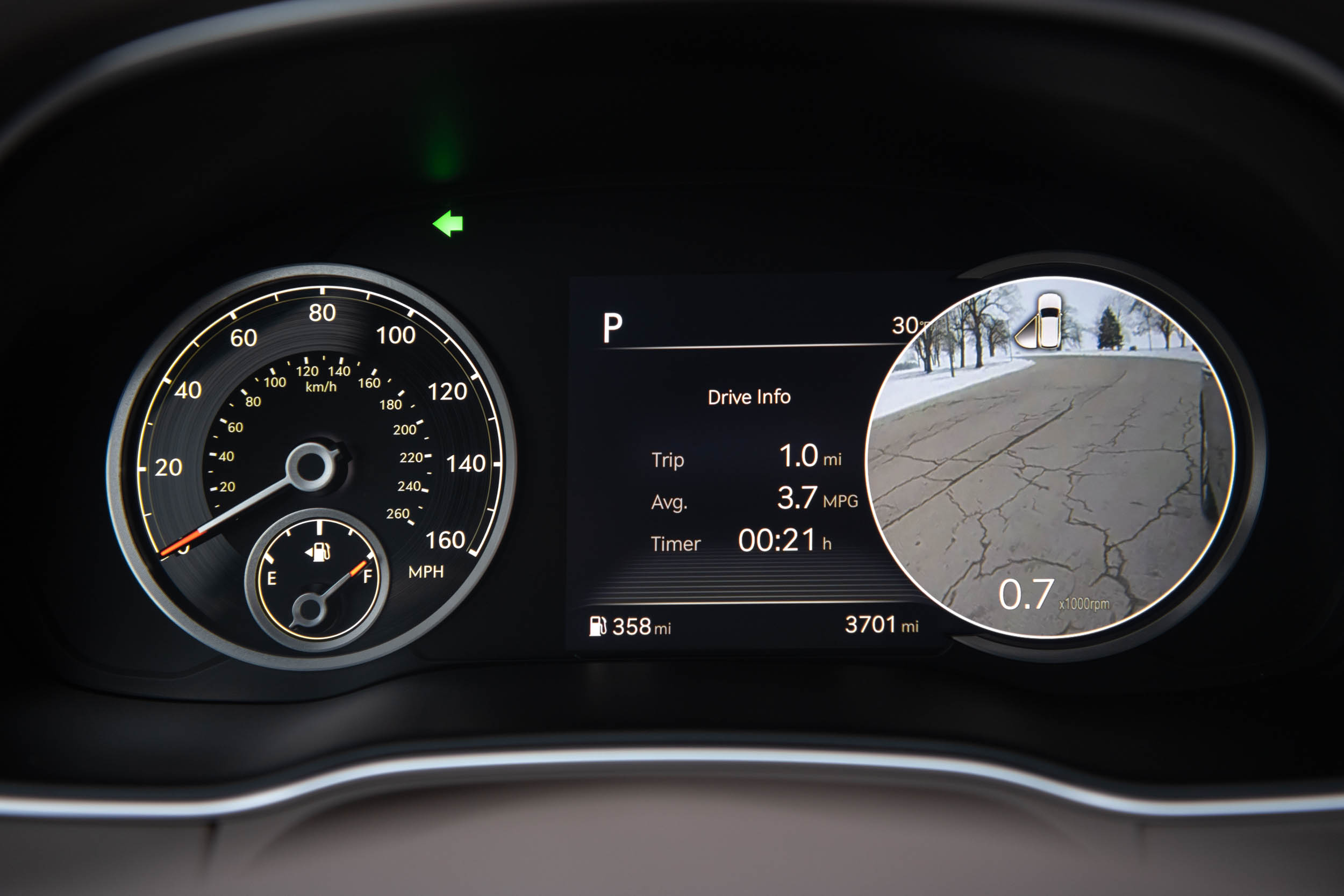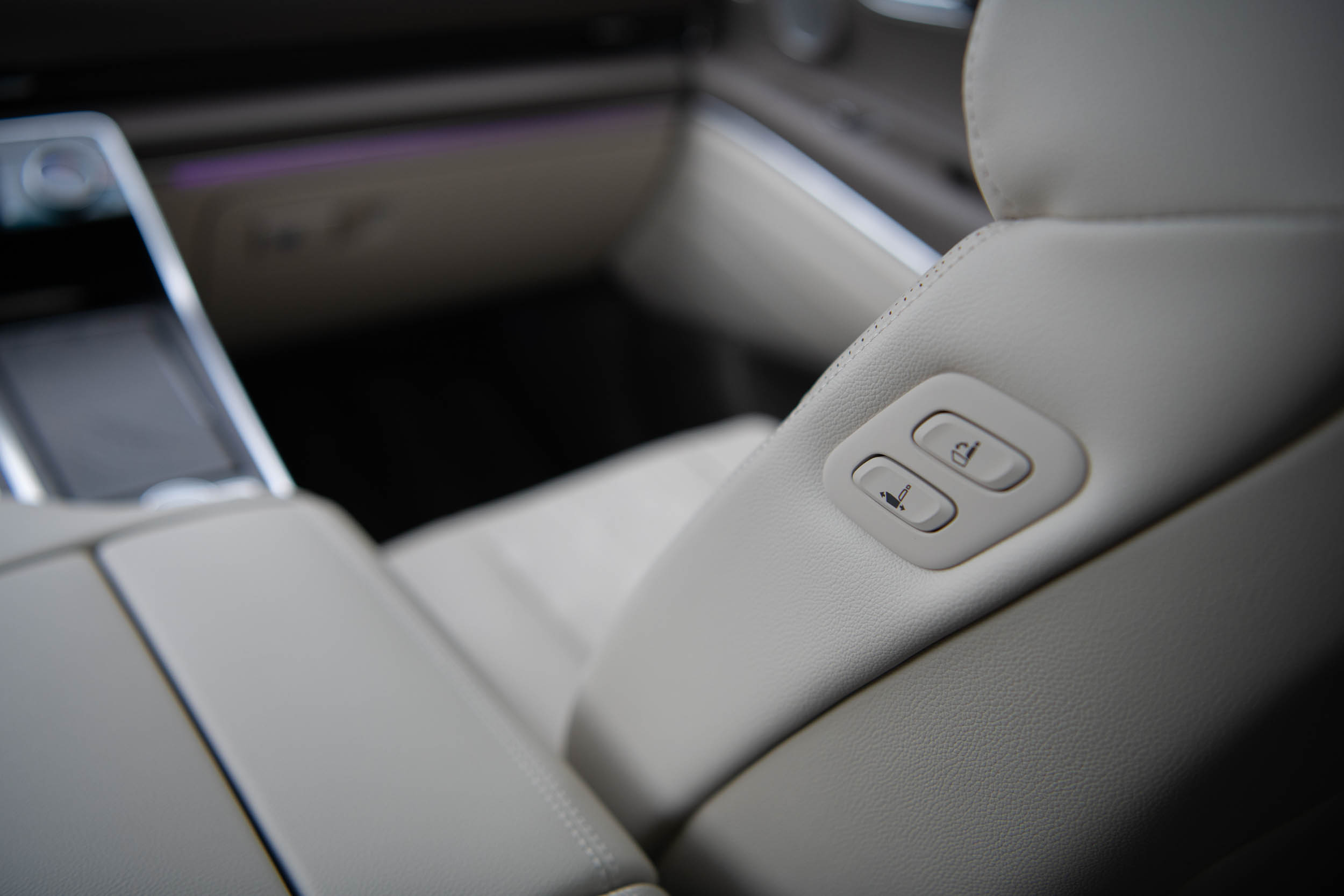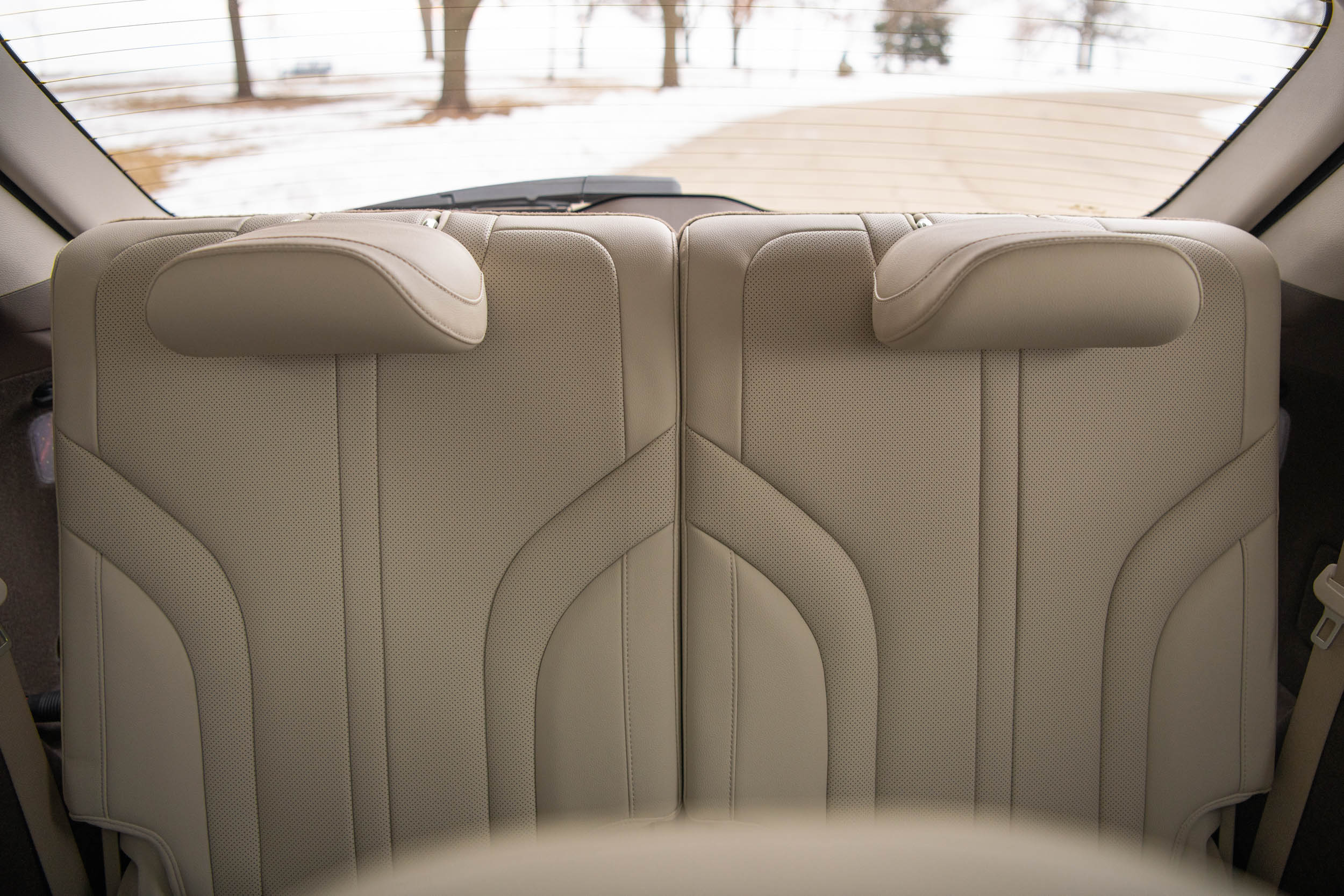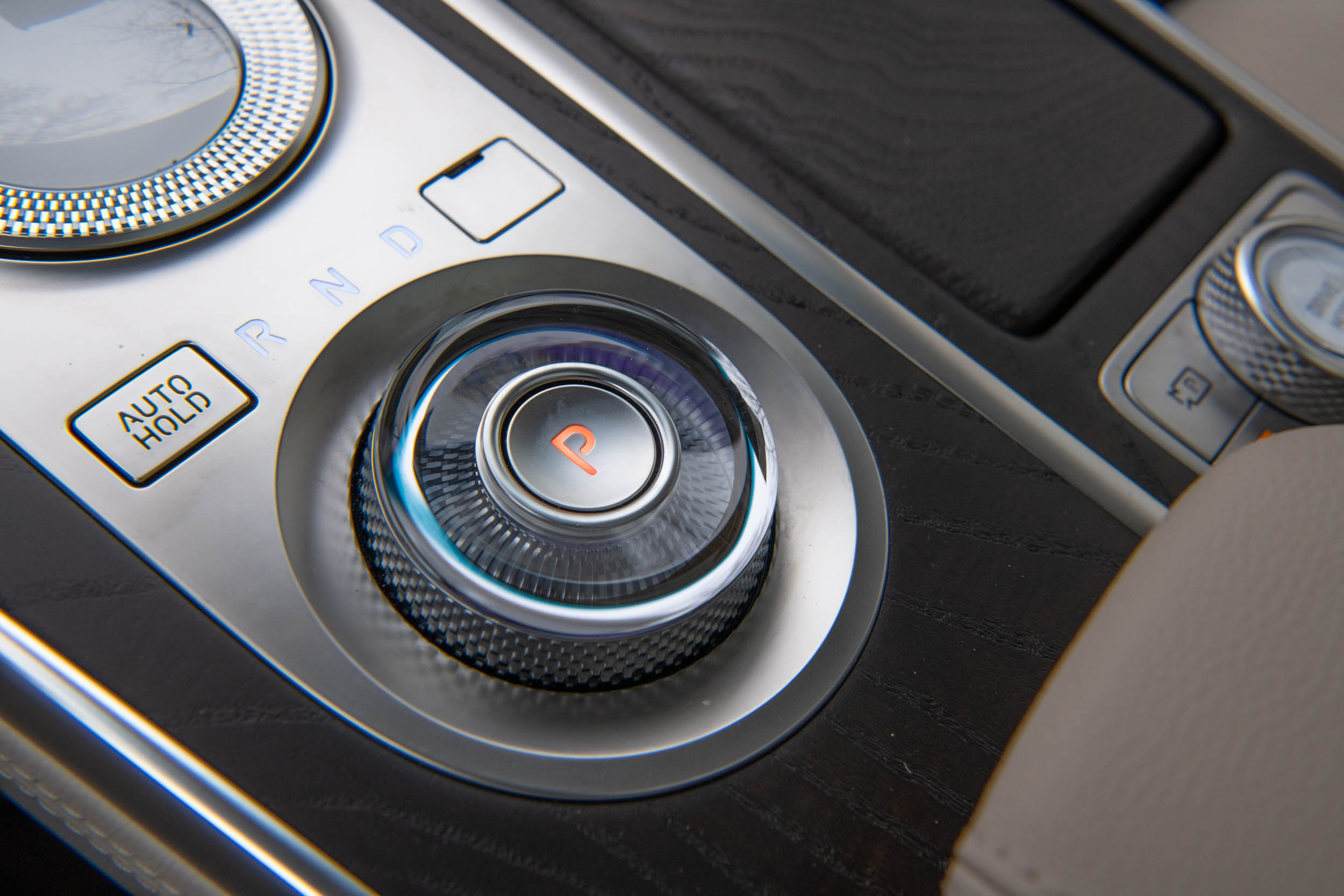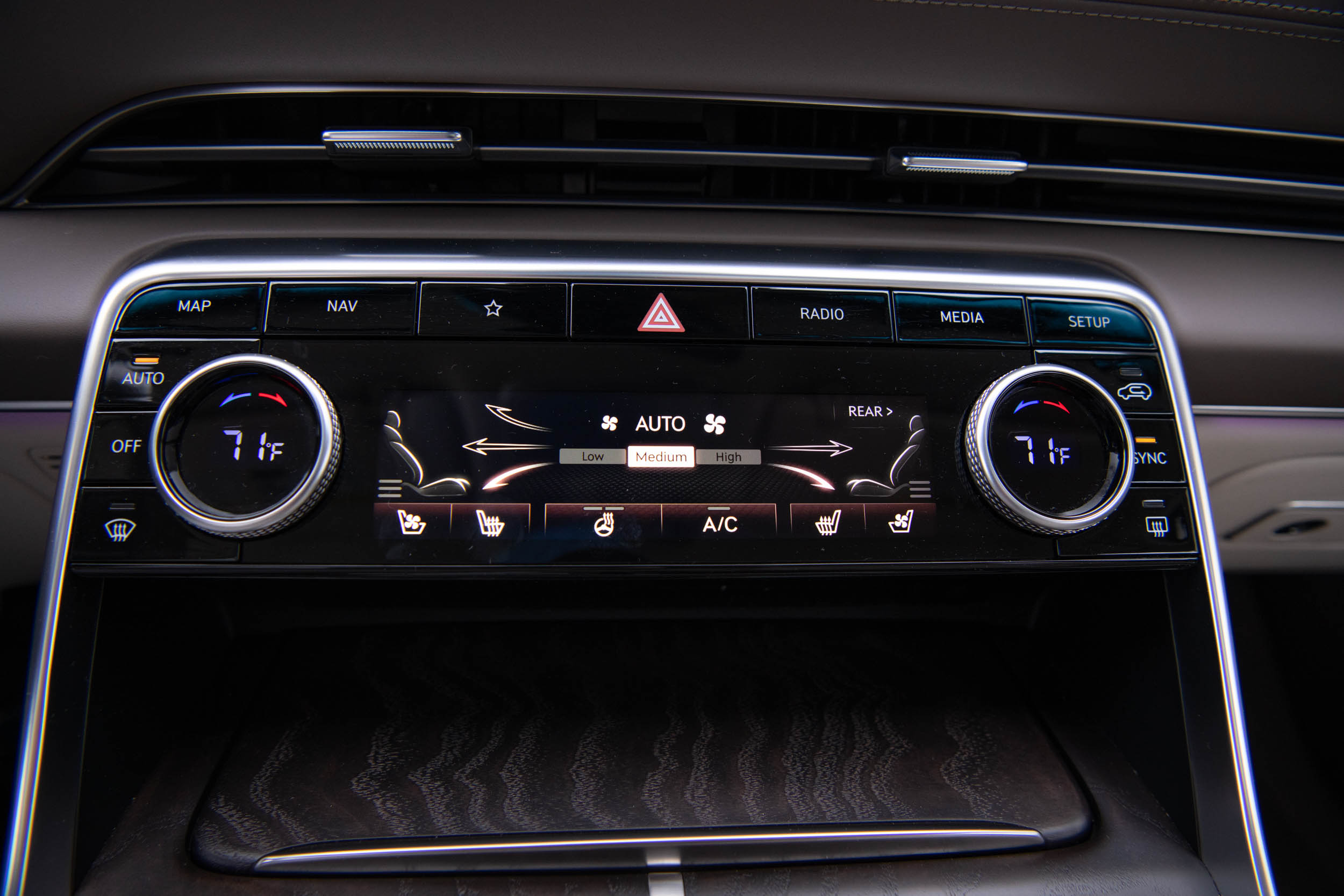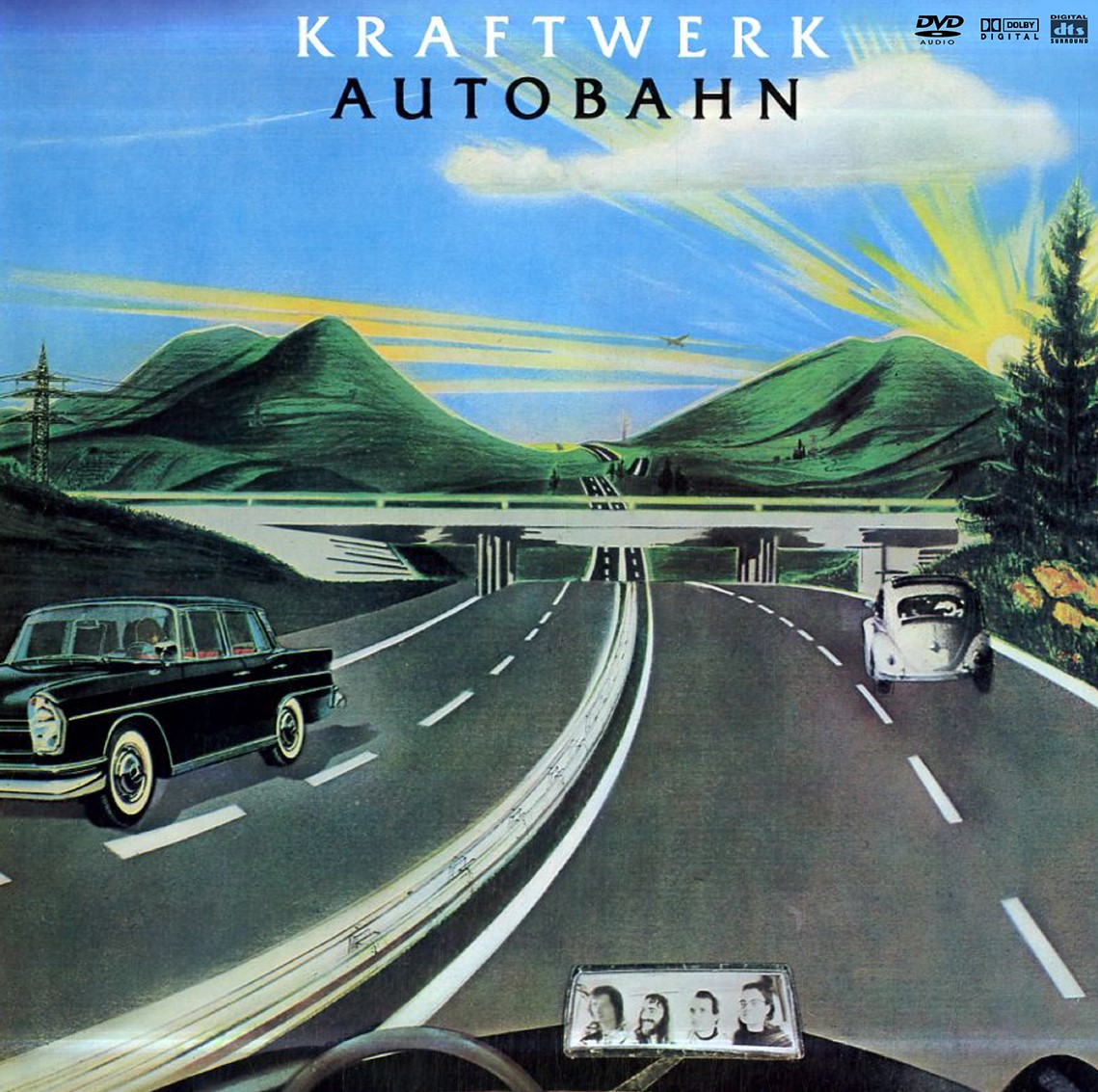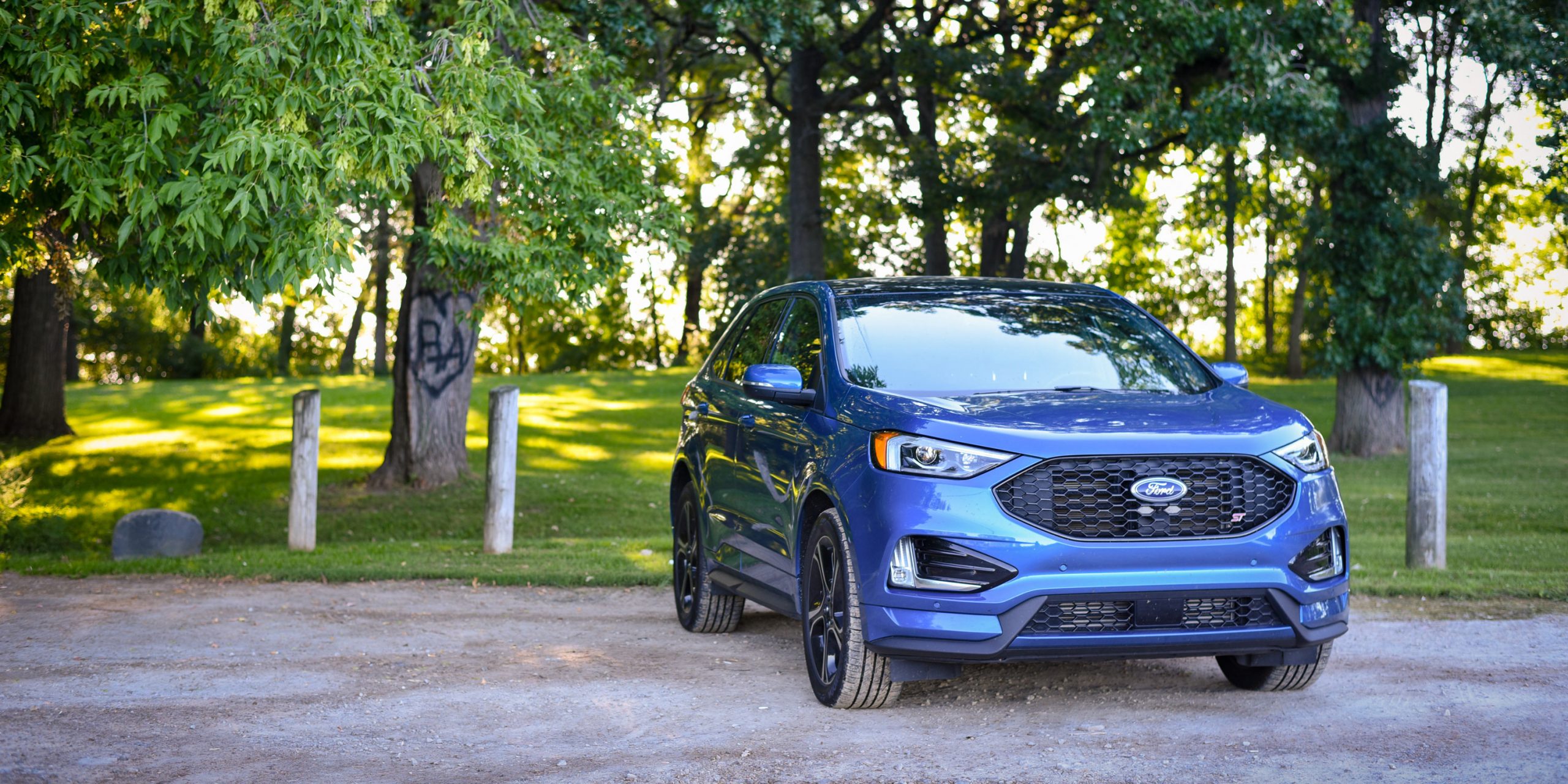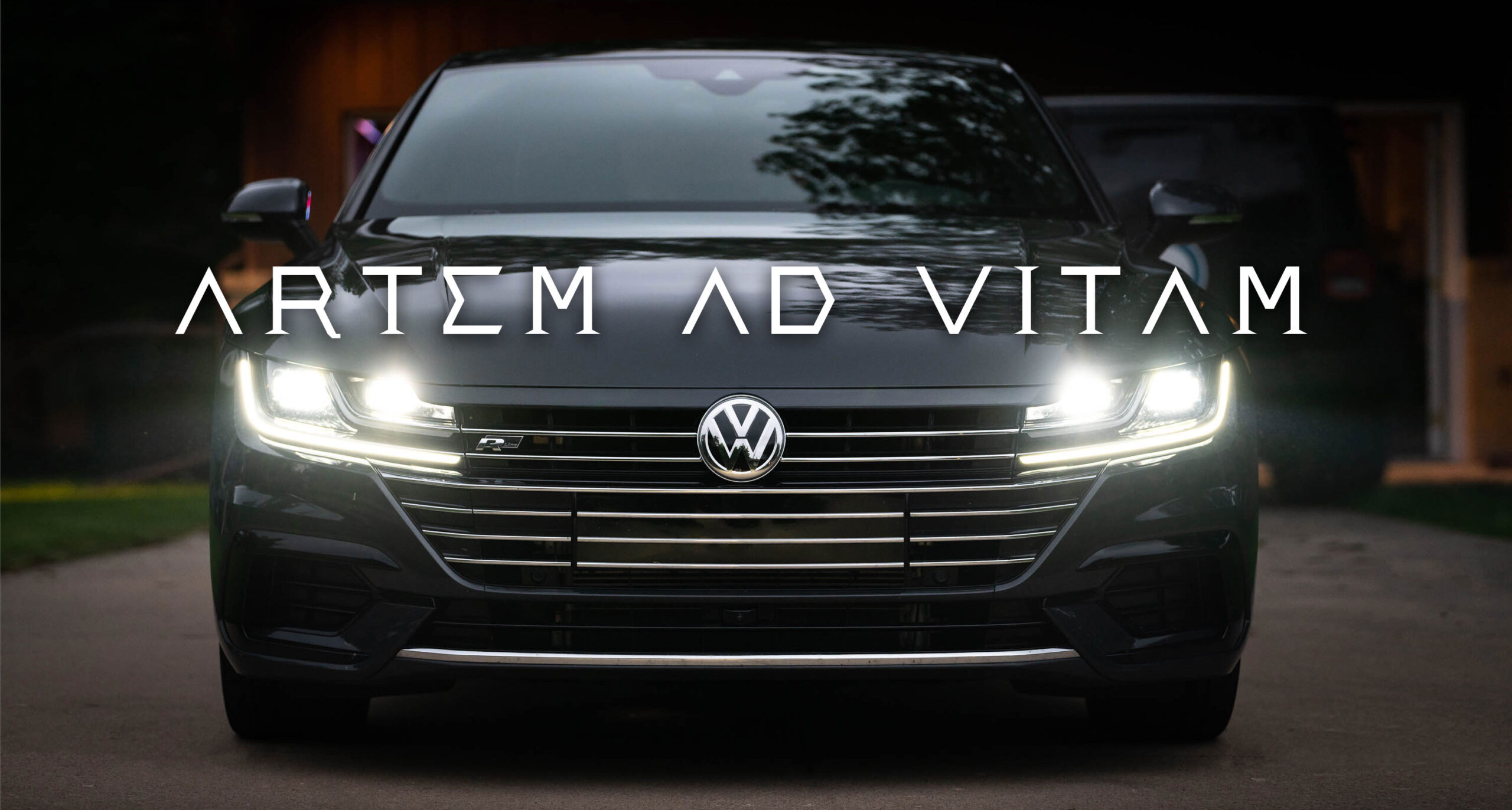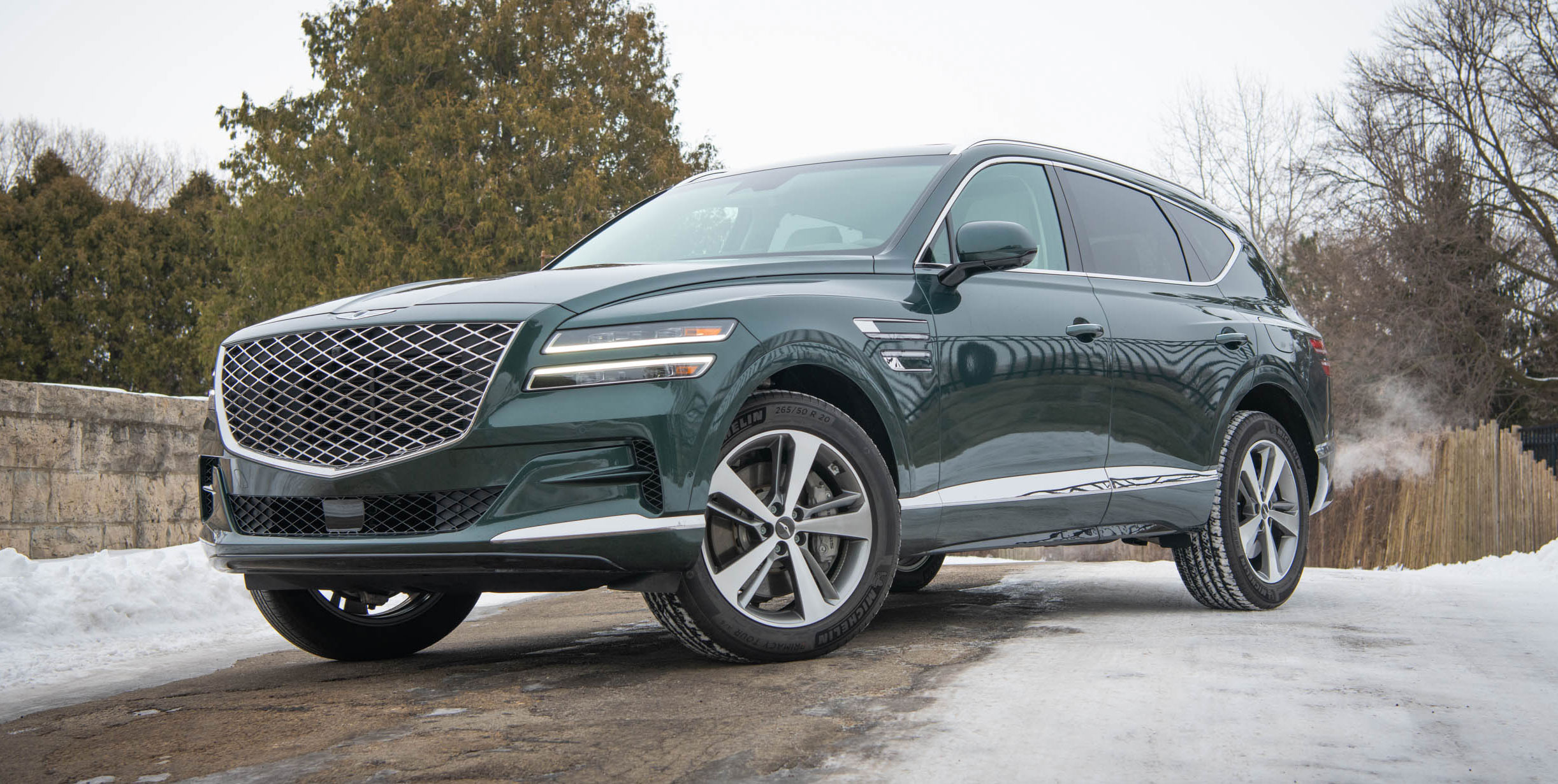
Words and Photos by Jennifer Jensen
FIRST TRY
Say “hello” to the all-new Genesis GV80, the first SUV in the Genesis lineup.
First shown to the public at the 2017 New York International Auto Show, the production GV80 was unveiled a year ago and you can buy one now. Spoiler alert, if you are in the market for a midsize SUV you should buy one, or at least take it for a test drive. You may be surprised by what you experience.
The GV80, like its sedan counterpart the G80, is a clean sheet design from Genesis.
Designed with teams from South Korea, the United States and Germany, the GV80 is clearly a Genesis product without simply being a jacked-up version of the sedan. It has its own character while remaining true to the family characteristics of “Athletic Elegance.”
Consider the large front grille replete with bling, the strong “parabolic” profile line, quad lights (that are full LED with high beam assist) up front and matching stacked LED taillights. All of these attributes are present across the Genesis model line and they look fantastic on the GV80.
A STRONG FOUNDATION
All of those good looks need something firm to stand upon and Genesis’ all-new 3rd generation rear-wheel drive platform provides just that.
Codenamed “M3” (don’t tell BMW), the unibody design uses hot-stamped parts ultra-high-strength steel and high-strength steel to forge the strongest foundation possible.
In an effort to offset the weight of all that steel are body panels in aluminium. The hood, doors and rear decklid are all crafted from the lightweight material. But that’s not enough aluminium to keep weight to a minimum.
The GV80 is portly with curb weights varying from 4,500-pounds up to 5,100-pounds depending on equipment and options.
MOTIVATION
Just like the G80, the GV80 offers two engine options. The base engine is a 2.5-liter turbocharged four-cylinder producing a healthy 300 horsepower and 311 lb-ft of torque.
Or you can opt for the 3.5-liter twin-turbocharged V6 with 375 ponies and 391 lb-ft of torque.
The four-cylinder is available with either rear-wheel or all-wheel drive while V6 models come with all-wheel drive as standard.
The all-wheel drive is electronically controlled and the GV80 favors sending power to the rear wheels. The system can send up to 50% of the power to the front wheels if the backs are slipping.
On the top-tier “Prestige” spec GV80 there is also an electronic limited slip differential that uses braking to transfer power between the two back wheels.
Both engines are mated to an 8-speed automatic transmission with paddle shifters. You don’t need those paddle shifters and Genesis should just take them out.
BEAUTY
In my opinion, the GV80 is a standout in the midsize luxury SUV crowd. It competes with the likes of the Acura MDX, Lexus RX, BMW X5, Mercedes-Benz GLE, and Volvo XC90. That field is getting quite crowded, especially when you add in players like the Infiniti QX60, Range Rover Velar, Jaguar F-Pace and Cadillac XT6.
That is a tough competitive set and I’m probably forgetting another one or two more.
But the GV80 really looks the part when you are standing next to it. It is one of those vehicles that when you get to work in the morning and are walking in you will take one more glancing look back before the GV80 is out of your sight.
Many people have stated the GV80 is a budget Bentley and yes, twice in our week with it we were asked if it was, indeed, a Bentley. Ironically that is the same number of people who queried the same when we had the G80 sedan. No, they weren’t the same two people. But the GV80 does capture some admiring glances.
That eye-catching attractiveness transfers to the inside as well.
COMFORT
The interior of the GV80 is similar to that of the G80 but not quite the same. There is leather everywhere, soft touch surfaces, clean and readable gauges and fantastic attention to detail.
The standard driver’s seat is a 12-way power unit but our test model had the optional 16-way seat with Ergo Motion.
That seat has seven air chambers that use computer analysis to make sure you are as comfortable as possible while retaining good posture. The seat will also adjust your body during long road trips making sure you are refreshed when you arrive at your destination rather than being stiff or sore.
There is even a Smart Posture system wherein you enter your body details (height, weight, inseam) and the GV80 will put the seat in what it feels is the right position for good posture while driving.
When I tried it the seat was moved too far away from the pedals and steering wheel so I don’t think it’s perfect, but the Dr. Scholl’s of seats was comfortable anyway.
Heating elements in both the front and second row seats are standard on the GV80 with ventilating seats and a heated steering wheel as options.
That second row is almost as comfortable as the front. The seats not only have their own heat, but they recline far enough to get into a nice sleeping position.
Manual sunshades adorn the rear doors and the second row gets its own climate control that can also be managed from the front.
A powered third-row of seats is optional and they are a bit of a tight fit though ingress and egress are simple enough with the second row seats tilting and sliding forward well out the way.
There is also an abundance of technology prevalent in the GV80. That comes with our biggest complaint as well, but I’ll come back to that.
ALL THE TECH
You want a touchscreen? You got it.
How about a trackpad that you can write on? Yours!
You say you like dials that spin and click? You can have that too.
How about direct interaction buttons that give you exactly what you’re looking for with one push? Absolutely!
The GV80 has a gorgeous 14.5-inch infotainment screen and about three hundred ways to interact with it.
It is a touchscreen though it is stationed a little further away from the driver than would be ideal to use it as a touchscreen all the time.
So the Genesis engineers provided a row of direct reaction buttons just below the slim line vents.
There are buttons for the map, navigation, radio, media and setup. Hit any one of these and the whole screen up top will immediately respond in kind. Just like it should. Simple. I love it.
Then there is the Wheel of Doom (we seriously need to trademark that).
On the center console between the driver and passenger are two round dials. The one at the back is the PRNDL. That works great, lights up different colors and just looks beautiful. In front of that is what Genesis calls the “Genesis Integrated Controller.” We call it garbage.
In our G80 review we said…
Do you remember when the iPod first came out? It had that spinny wheel thing to sort through your songs. You could spin the wheel but you could also push it.
The Wheel of Doom works the same way. Fine, right? Abso-freaking-lutely not.
You see, the wheel takes some pressure to spin it. But if you apply too much pressure then you are pushing the “button” portion of the wheel, which may send you in the exact opposite direction you are trying to navigate to.
On top of all that there is a handwriting feature in the middle of the controller that lets you write (with your finger) letters and numbers for the navigation system to interpret. Audi has a very similar feature on top of their MMI controller and that one works very well. The Genesis version, unfortunately, does not.
Over the course of a week with the GV80 the handwriting feature correctly read what I was trying to write once. One time. That is out of about 50 attempts. Not a good success rate.
For the most part I could interact with the infotainment through the touchscreen or the direct access buttons and I didn’t have to fuss with the Wheel of Doom. I get why it’s there, but if it had less ways to navigate through the menus it might be a little easier to use. That would also reduce time with your eyes off the road.
Speaking of eyes, the GV80 has a head-up-display that is clear and easy to read. It could provide some additional data, but for the most part it was nice to have.
Another tech feature is a 3D instrument cluster. If equipped with this option there are two little laser readers in the IP that watch your eye movements and present the info in that screen in a 3D type fashion. It’s a bit gimmicky but also kind of cool.
THE GV80 CARES
Then there are the safety features. All the safety features. Literally, ALL OF THEM.
From center-mounted airbags between the driver and the passenger to machine learning Advanced Driver Assistance Systems, the GV80 has it all.
How about we just share in Genesis’ own words all the safety tech packed into the GV80…
- Highway Driving Assist II (HDA II): This system helps assist the driver in a wider variety of situations than before, including during lane change maneuvers when the turn signal is used, and when others merge in front of you.
- Smart Cruise Control with Machine Learning (SCC-ML): A world first, SCC-ML incorporates artificial intelligence (AI) within the Advanced Driver Assistance System (ADAS) feature that helps the car to independently learn the driving characteristics of – and assist – its driver.
- Forward Collision-Avoidance Assist (FCA): This system may help automatically bring the GV80 to a stop in certain situations where there is a risk of collision with an approaching vehicle detected on the left or right side of the intersection. GV80 may also help detect potential collision risks in certain situations where a pedestrian is sensed in close proximity to the vehicle while in motion, for example.
- Blind-Spot Collision Avoidance Assist (BCA): BCA is essentially a Blind Spot Monitor with active capabilities. BCA helps reduce the chance of potential impact with a moving vehicle and may alert the driver if a vehicle is detected in the driver’s blind-spot
- Lane Follow Assist (LFA) – Helps maintain vehicle position in the center of its lane by recognizing both lane markers and vehicles traveling ahead
Then there are the safety tech features that are debuting on the GV80. Those include:
- Lane-Change Oncoming (LO) — Helps prevent collisions with vehicles in opposing lanes on non-divided highways or roads.
- Lane Side (LS) — Helps prevent side collisions when merging into another lane with the
ability to see two lanes over. - Junction Turning (JT) — Automatically applies the brakes if an oncoming vehicle is detected in the opposite lane when making a left turn at an intersection.
- Junction Crossing (JC) — Automatically applies the brakes if a vehicle crossing from the
left or the right is detected when entering an intersection. - Evasive Steering Torque Assist (ESA) — Assists in avoidance maneuvers by applying steering torque once the driver has initiated steering input.
- Rear Cross-Traffic Collision Avoidance-Assist (RCCA) — Warns driver of vehicles coming
from the left or right while backing up and automatically brakes if a collision seems
imminent. - Parking Distance Warning, Front
- Safe Exit Assist with Power Child Lock Function (SEA)
Like I said, the GV80 really does care about the safety of its occupants.
ON THE ROAD
Unfortunately, most of our time with the GV80 was spent in sub-zero temperatures and a pair of snowstorms that dumped more than a foot of the white stuff in the area.
I say that’s unfortunate because we like to test the performance limits of the vehicles that come through our office. With all the perma-ice on the roads that made performance driving a bit trickier with the GV80.
Our tester was shod with Michelin all season tires that are rated quite favorably for their year-round performance. Like almost every tire that didn’t have spikes built in, those Michelin shoes were a bit of a handful.
The GV80 took it all in stride even when the Michelin’s were scrambling for grip.
Remote start on the key fob meant I never had to climb into the SUV with the engine completely cold. The heated seats and steering wheel come up to temperature relatively quickly though the HVAC interface won’t work with regular gloves or mittens. You need those fancy gloves that work with your touchscreen to be able to turn on those features through the haptic screen.
While the GV80 is based off the same chassis as the G80, the suspension set up is somewhat different.
The G80 uses lots of aluminium components in its suspension while those same parts on the GV80 are made of steel.
I’m not sure if this decision was made as a cost-savings measure, or because the steel might better be able to manage the taller and heavier body.
Regardless, I felt that the ride in the GV80 was more composed than that of the G80.
With the G80 sedan Genesis tried to bridge the performance gap between the smaller G70 and full size G90. I don’t think they managed that hat trick quite well enough and the G80 felt too stiffly spring at times and too floaty at others.
In the GV80 however, there isn’t something else in house to compare the ride to so the engineers tuned the ride to be comfortable without being wallowy. It works.
The GV80 handles bumps and broken pavement in a dismissive manner while still providing decent response from the attractive steering wheel.
There is also a feature called Road Preview that uses the front mounted cameras to scan the road ahead for imperfections and then sets up the electronically controlled suspension to deal with those imperfections in the best possible manner.
I’m not sure how well it worked but it must be pretty darn good as I never really felt the ride was jarring in any way.
There is a sporting nature to the steering especially when in sport mode.
There are four different driving modes available plus a custom setting that allows you to pick and choose your favorite settings from the other modes.
The modes: Snow, Eco, Comfort, and Sport all change suspension, steering, shift mapping and even the seats. In Sport mode the seats will hold on to you more firmly so you don’t slide around while driving in a spirited manner.
After the first blizzard during our week with the GV80 the SUV actually got stuck in a parking lot. This was with the drive mode set to Snow. Switching to Comfort allowed a little more slippage of the wheels and that was enough to get us out of the spot we were in.
TAKE A LOOK
The GV80 is an amazing first go at an SUV from Genesis. As a clean sheet design the company has delivered an outstanding package that, for the most part, bests its rivals at a lower price.
If there was one option I would recommend you have to get it is the 21-speaker Lexicon audio system. That means you need to go to either the Advanced or Prestige trim level on either the four-cylinder or six-cylinder.
The Lexicon system is amazing and better than the high-end systems in many of the GV80’s competitors. It makes you feel like you are in an auditorium with whatever musician you are listening to. It is an immersive experience that is well worth the uptick in cost.
The GV80 starts at $48,900 for the four-cylinder rear-wheel drive model. If you want the bigger engine it will cost you an additional $10,000. Step up into the Advanced trim and you’ll be in the mid $60K range with the Prestige topping out above that.
As mentioned in the first paragraph, if you are in the market for a mid sized SUV that offers comfort, refinement, performance and so much more, you would be remiss not to check out the Genesis GV80. This is truly a great vehicle.
